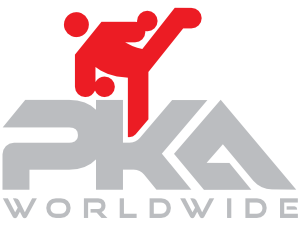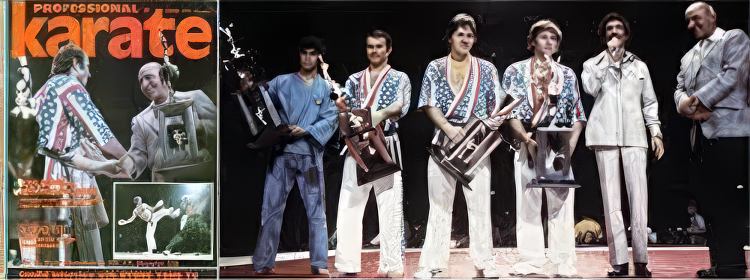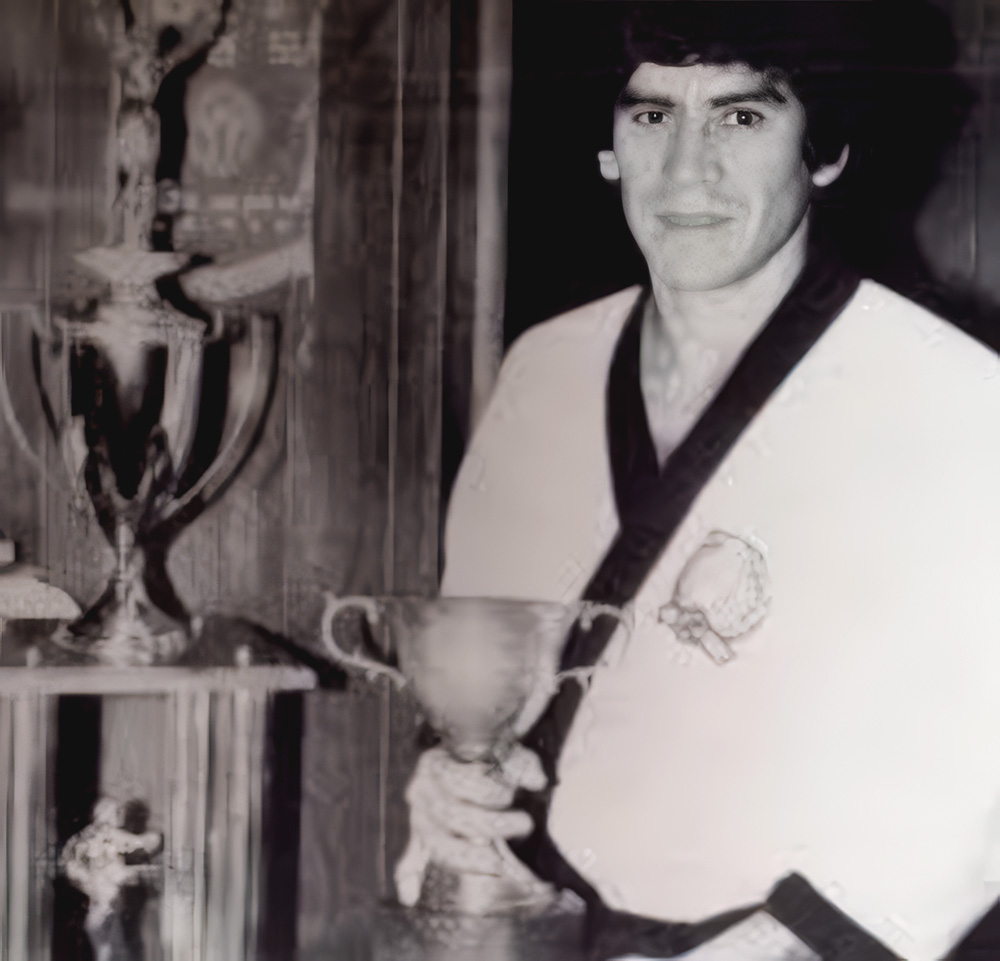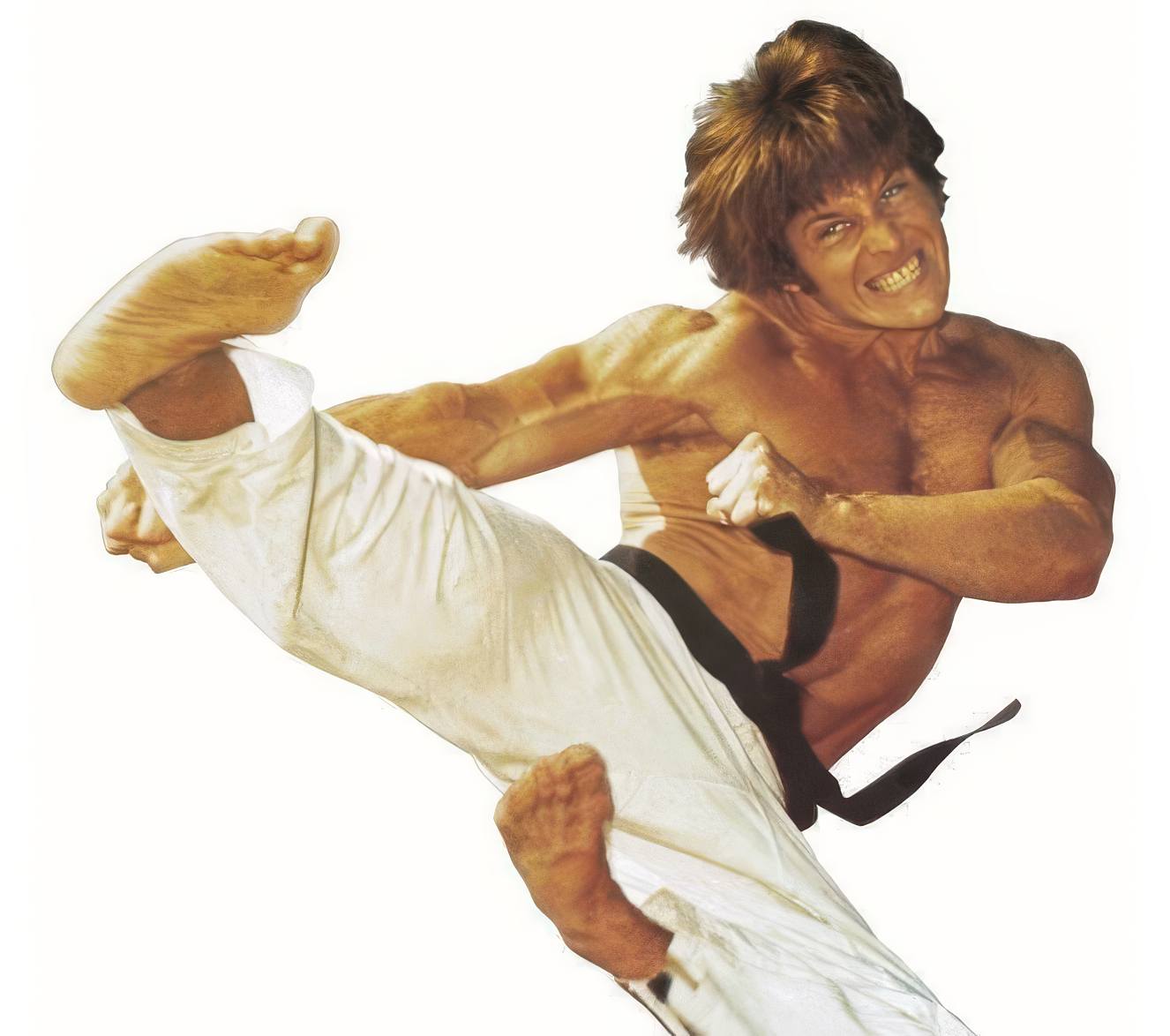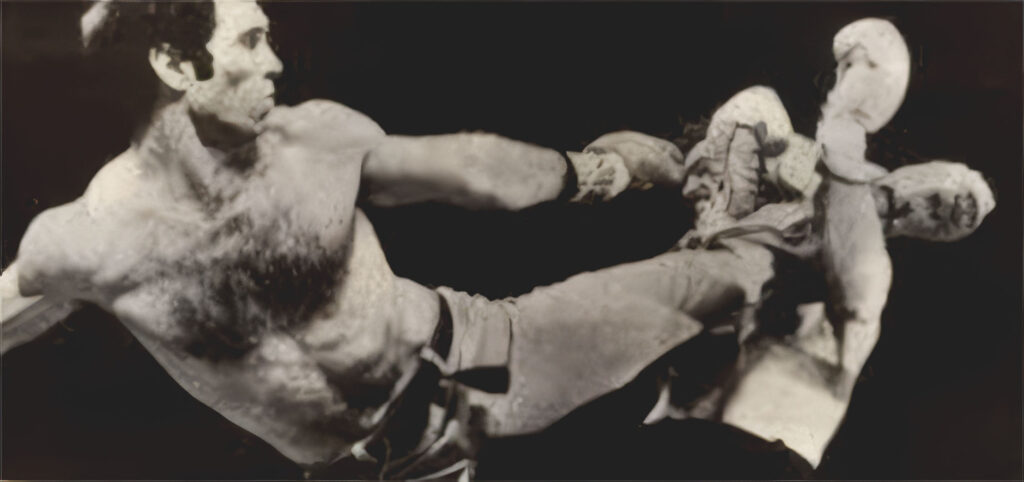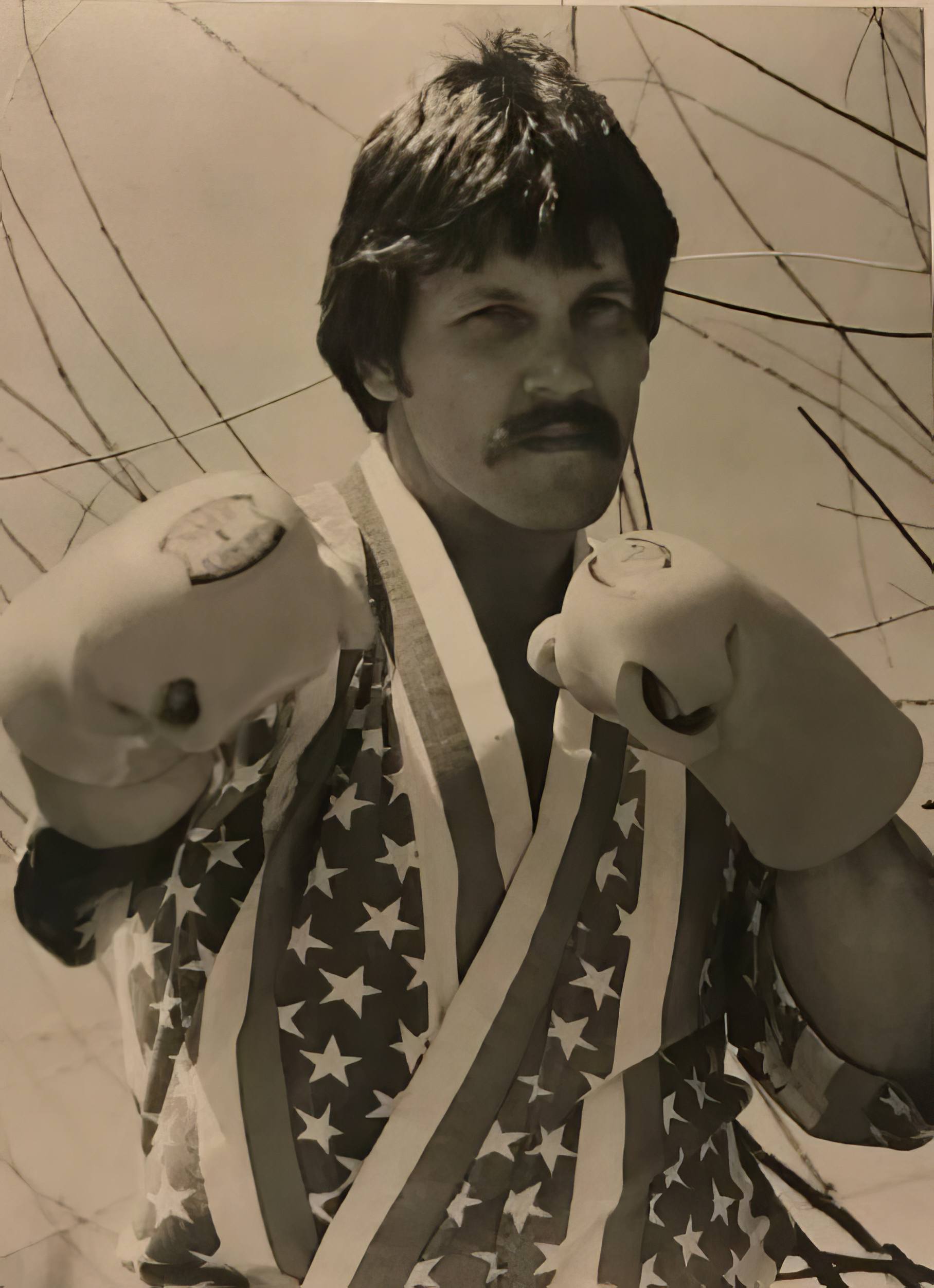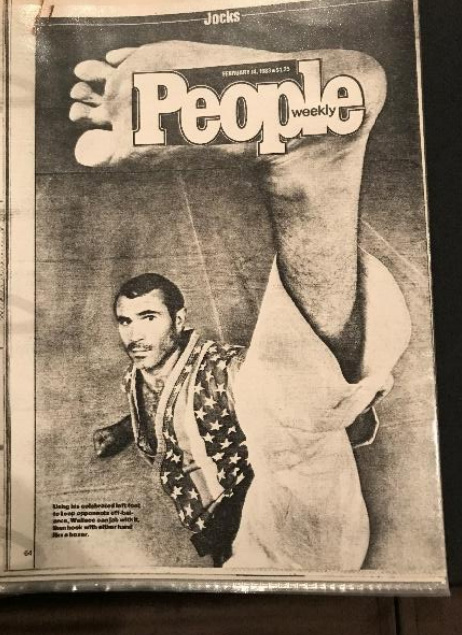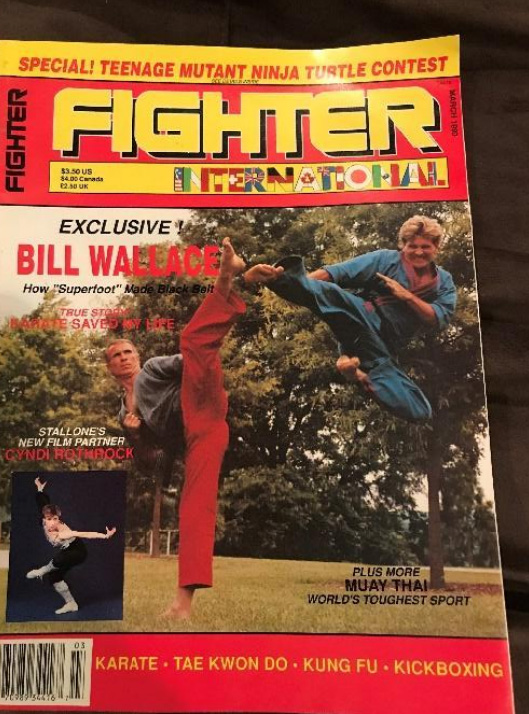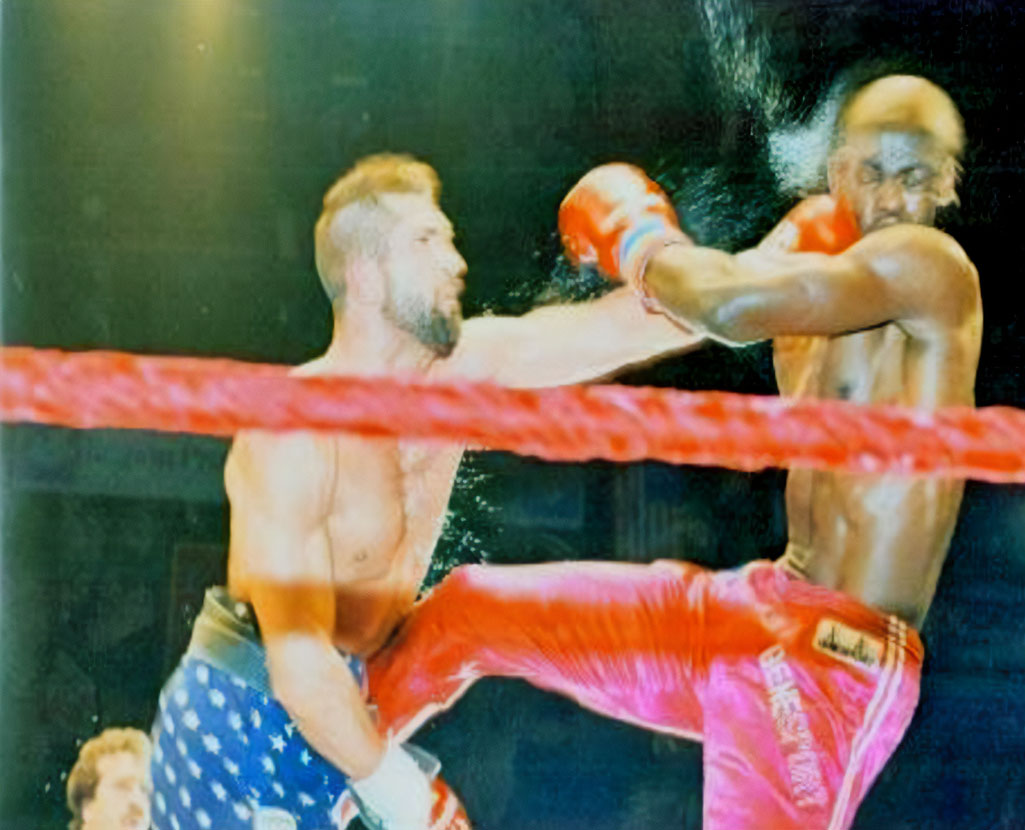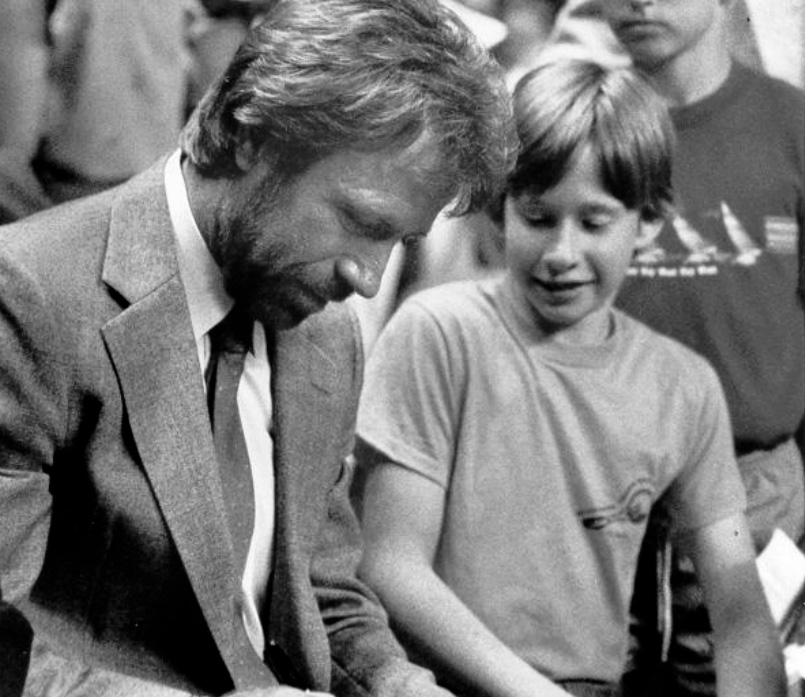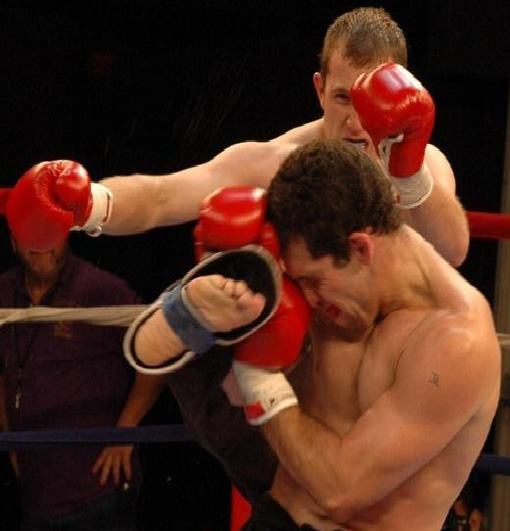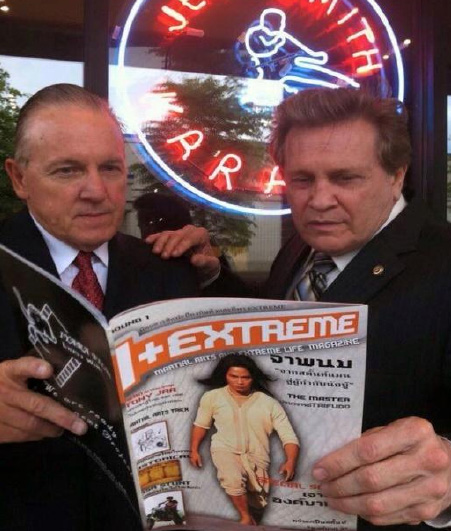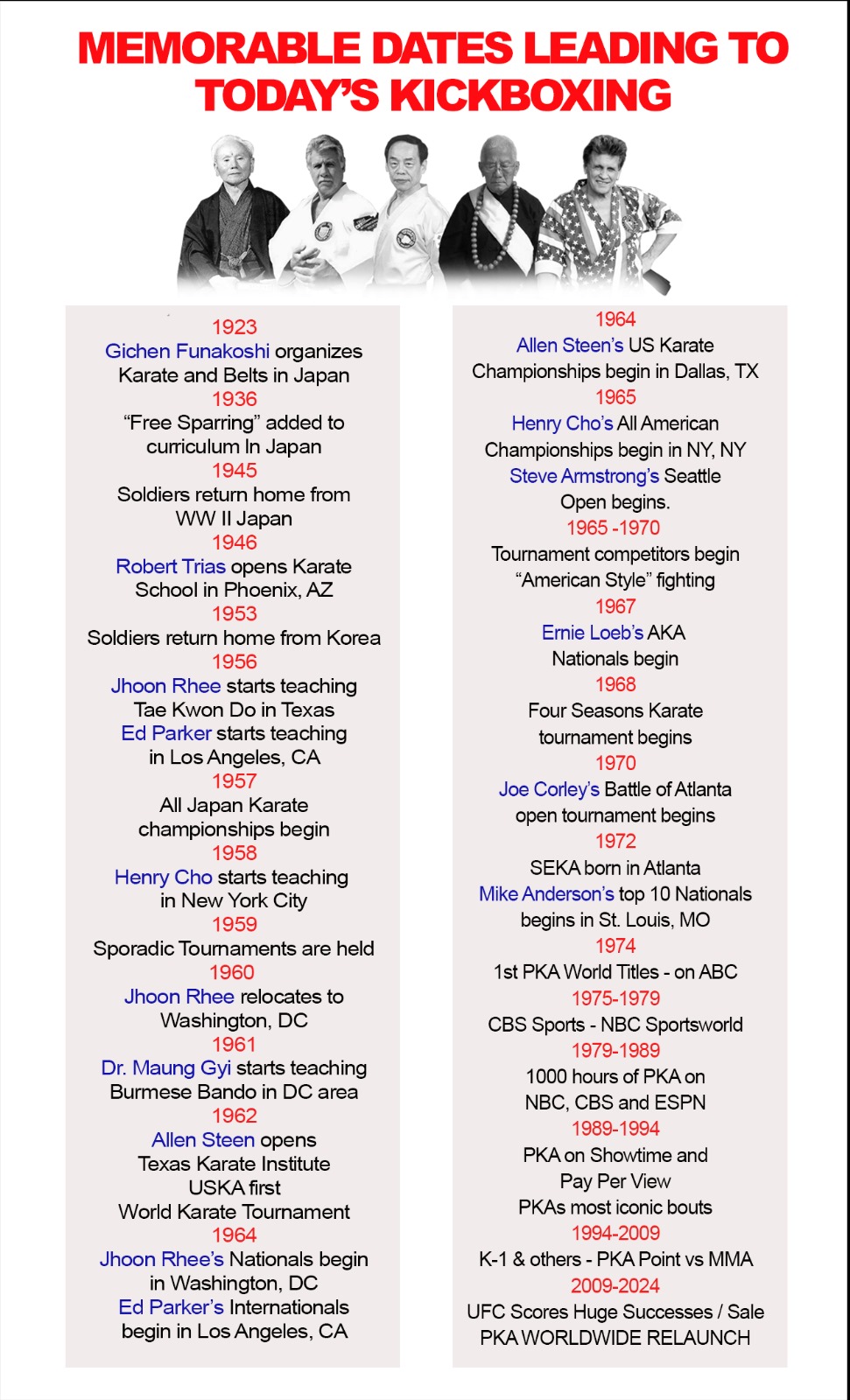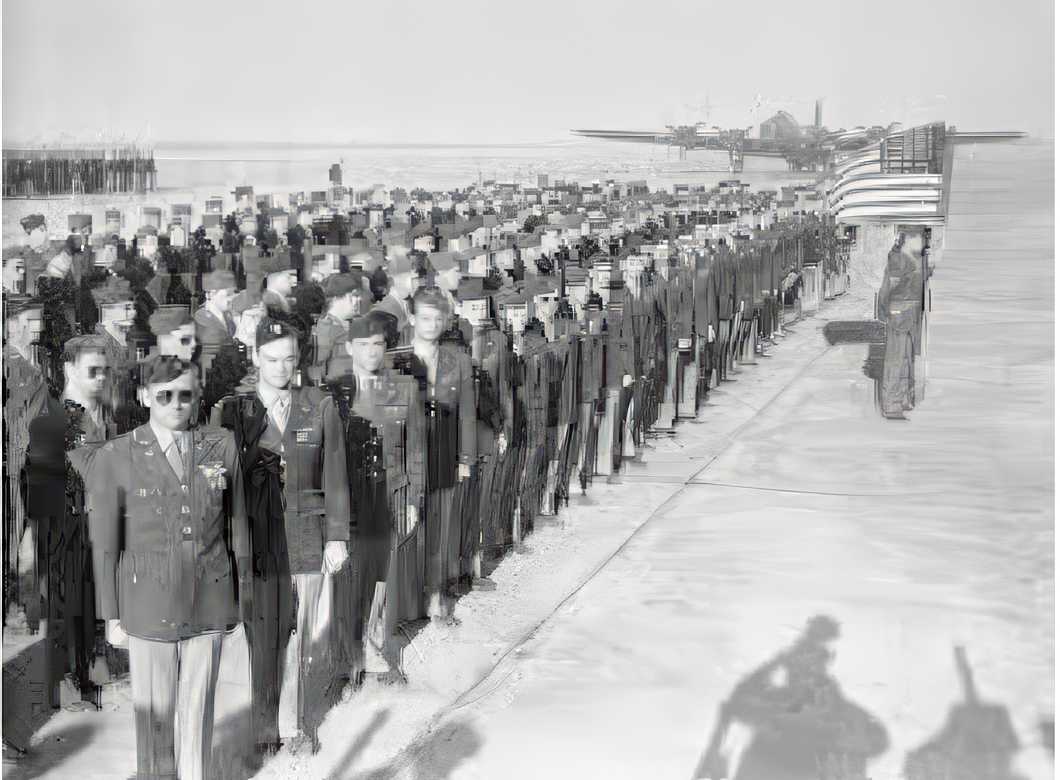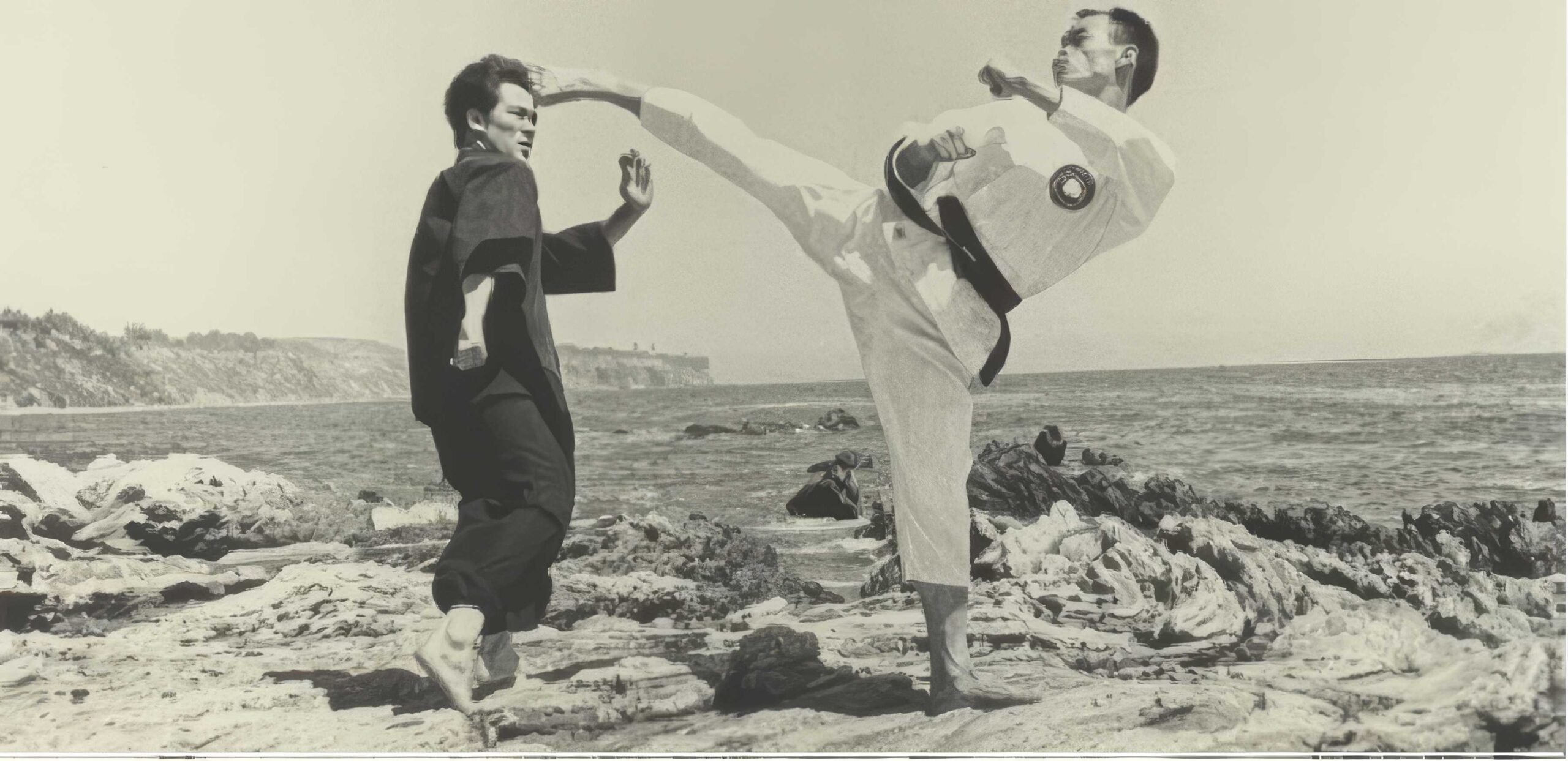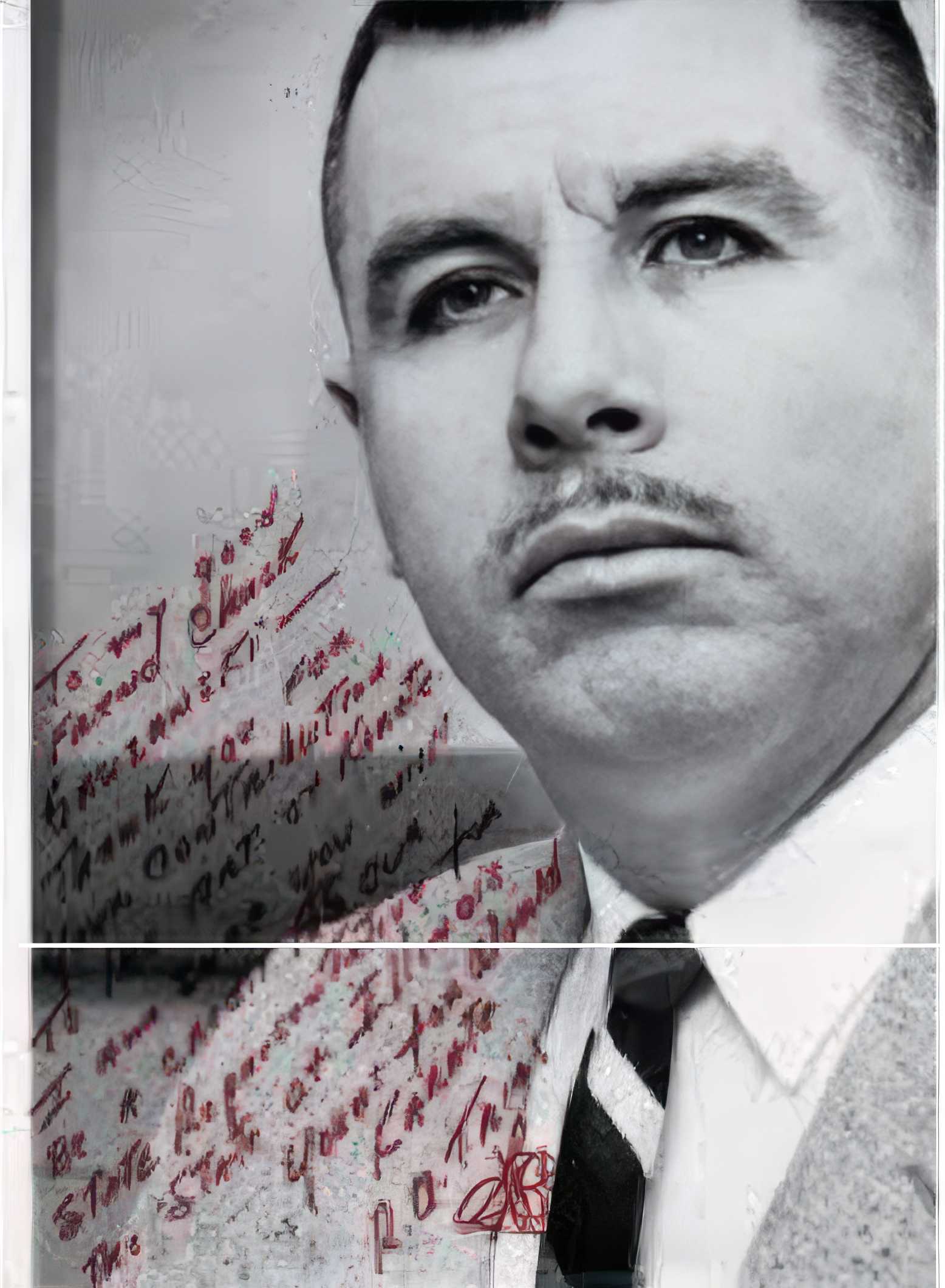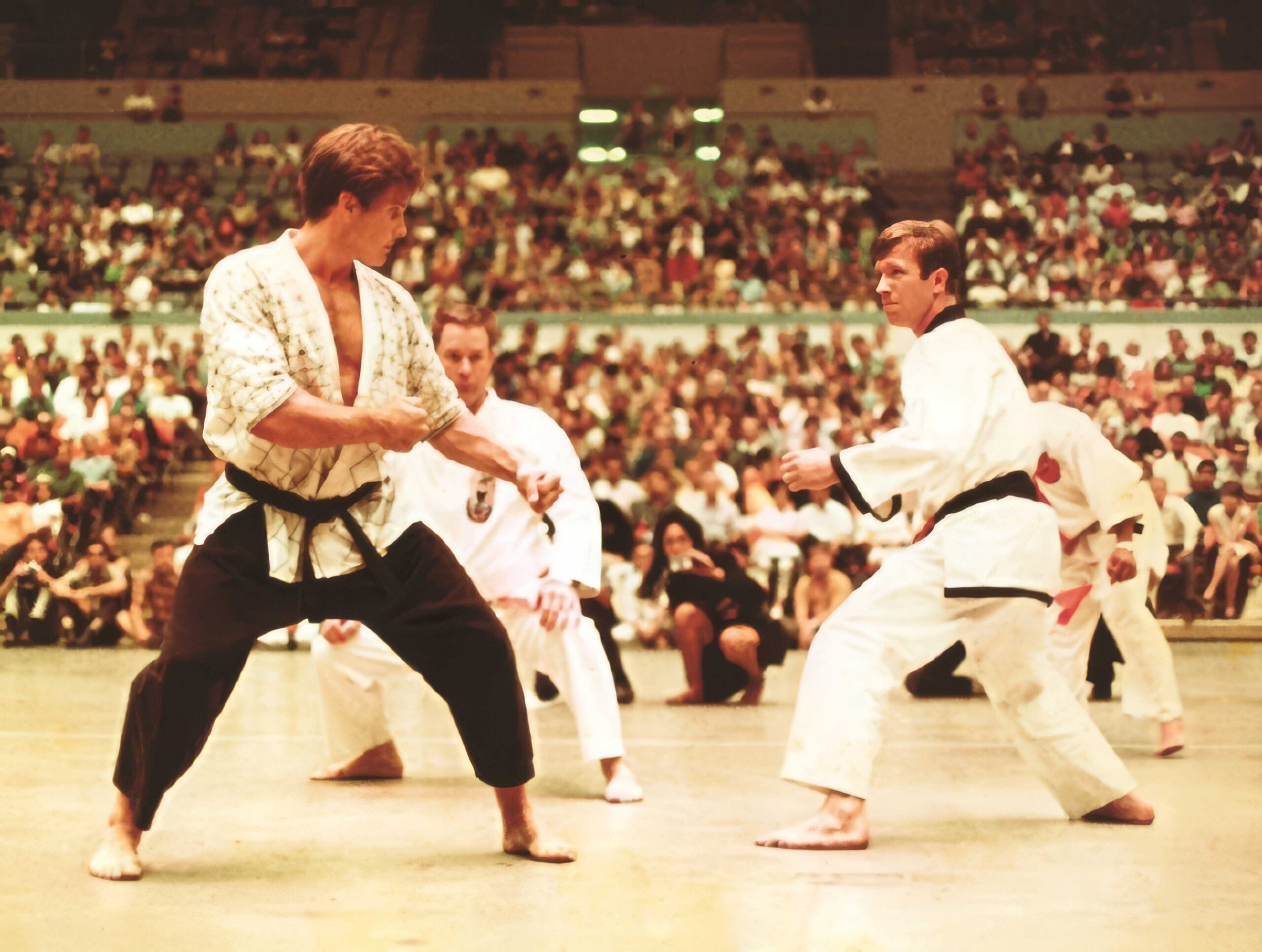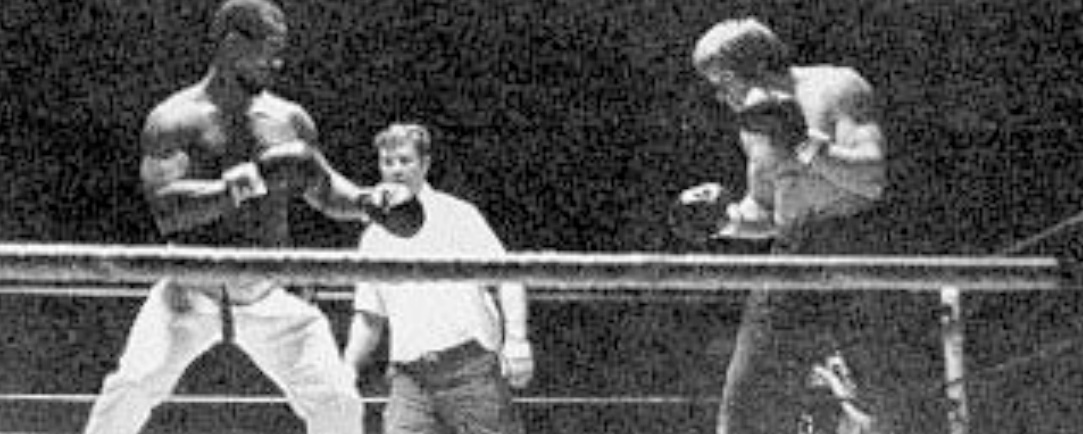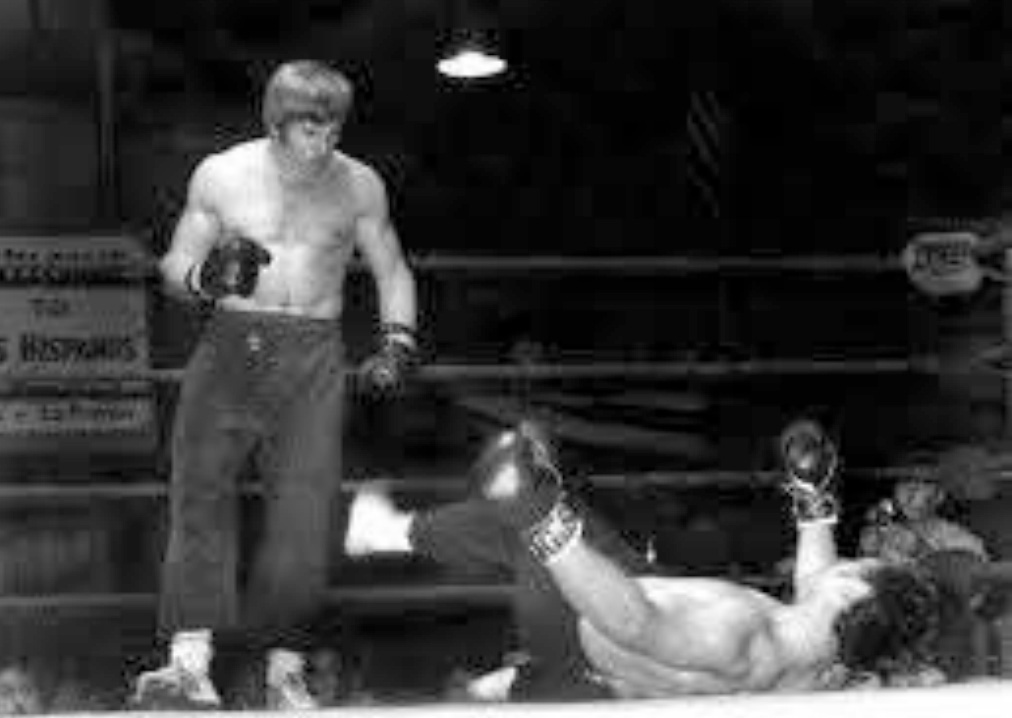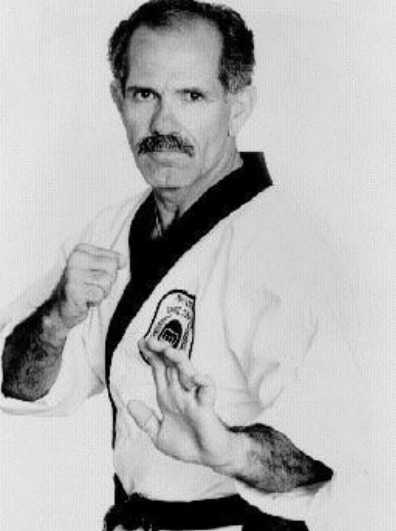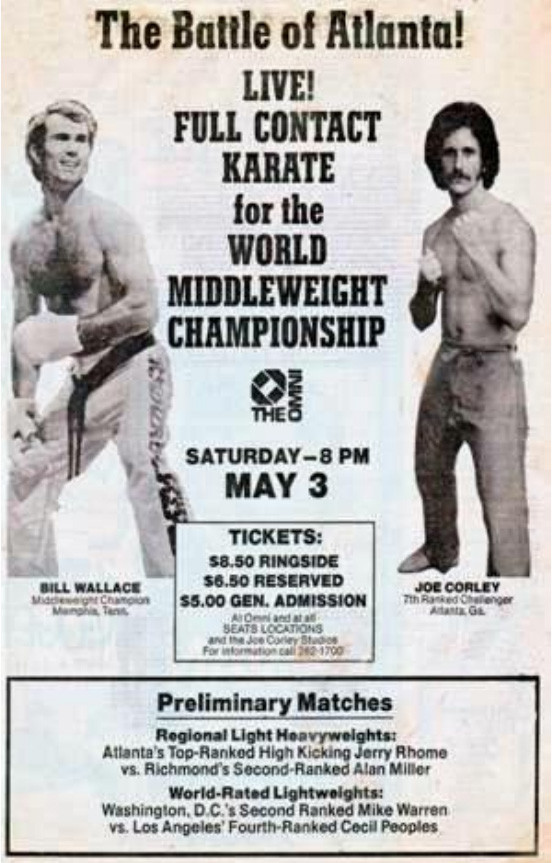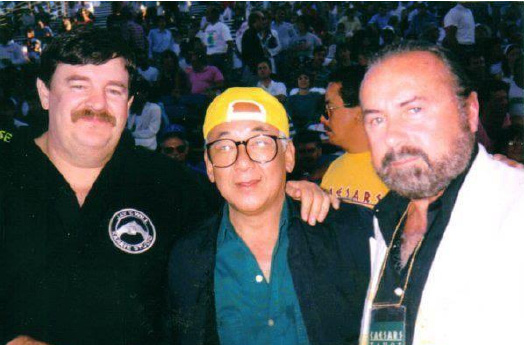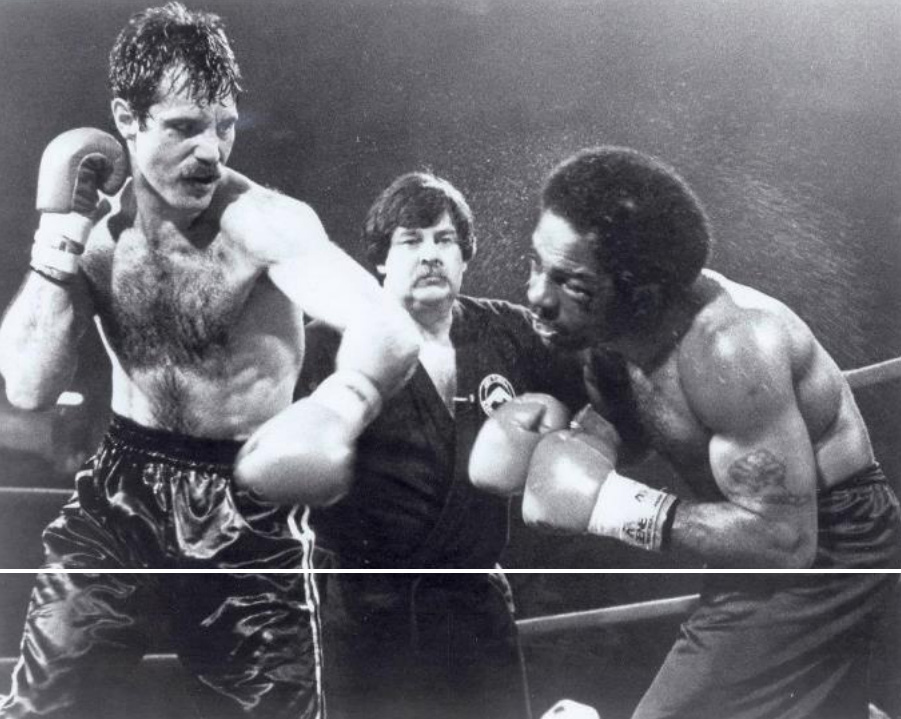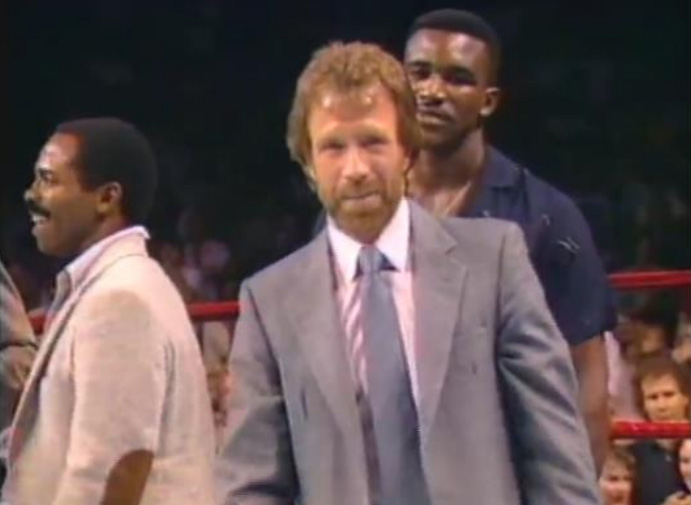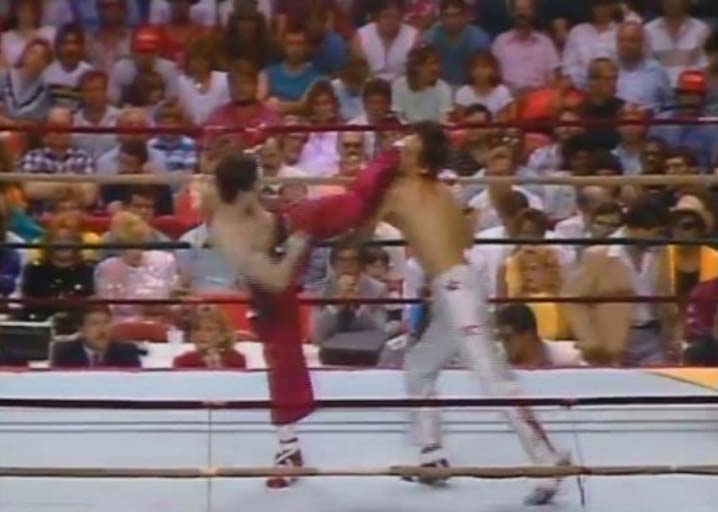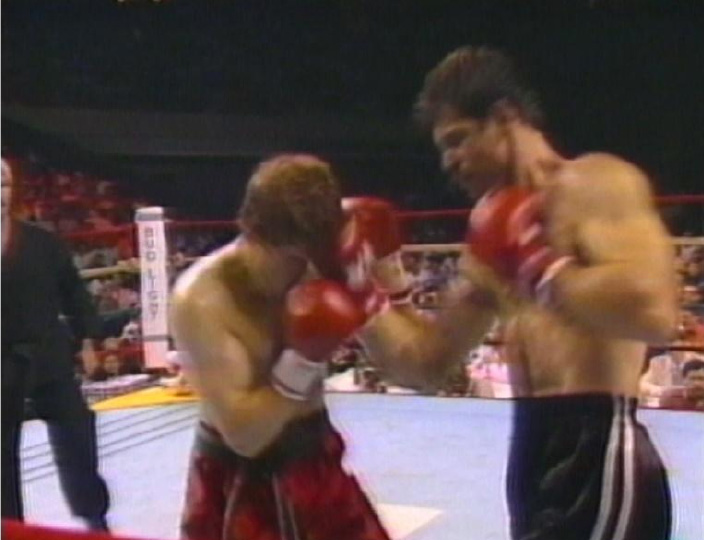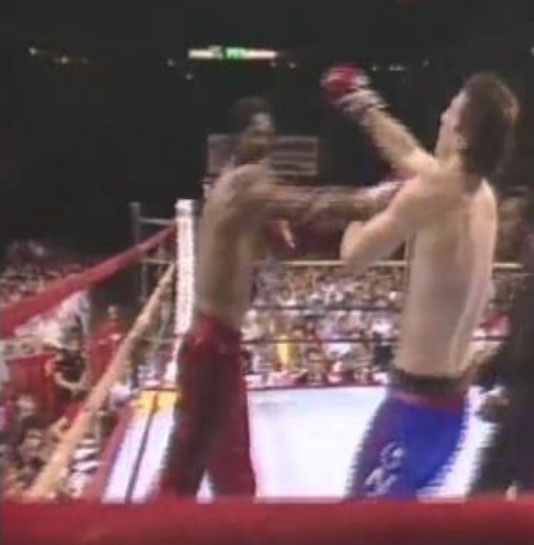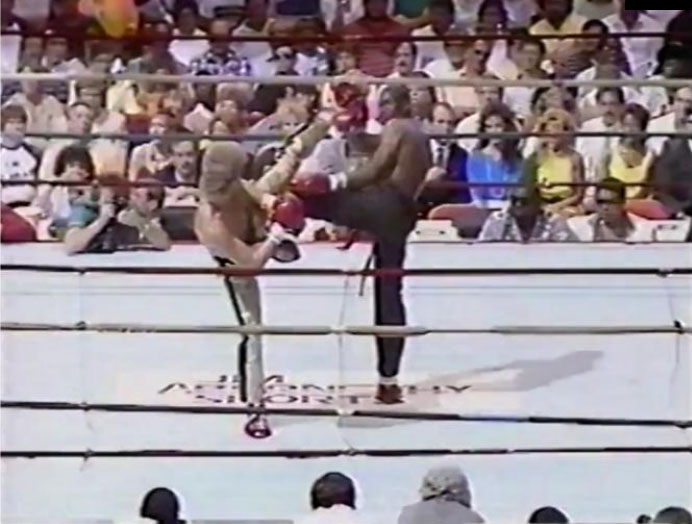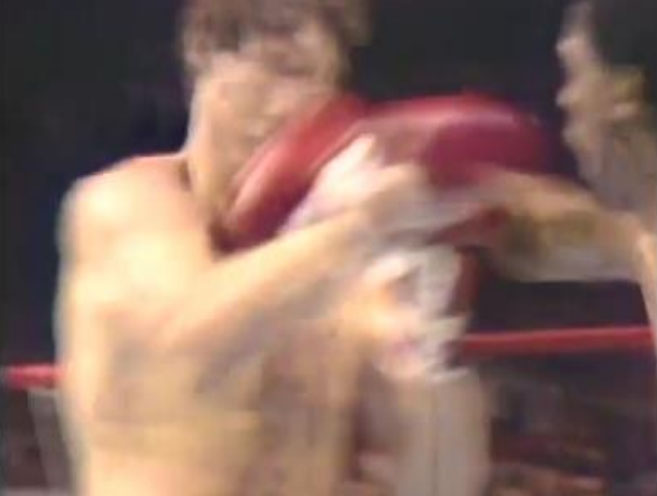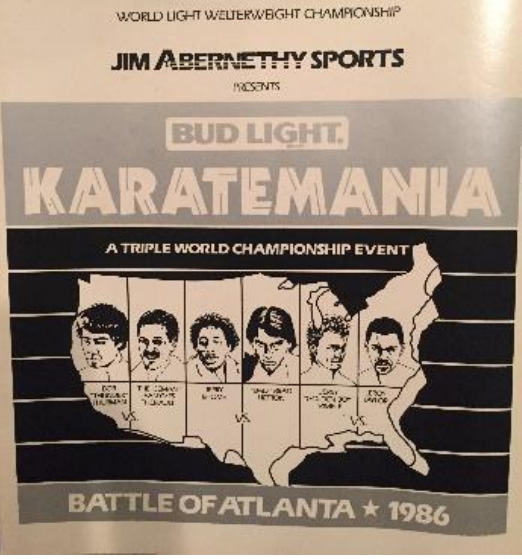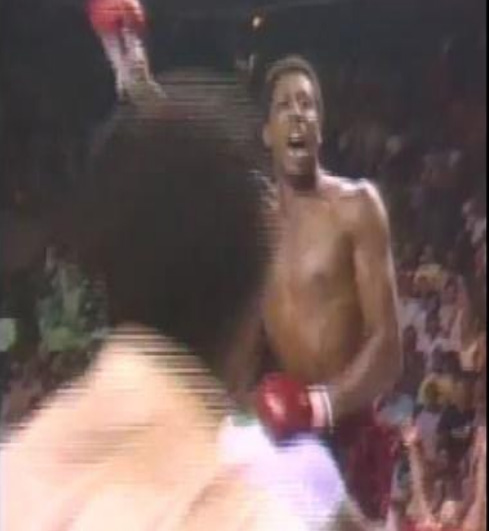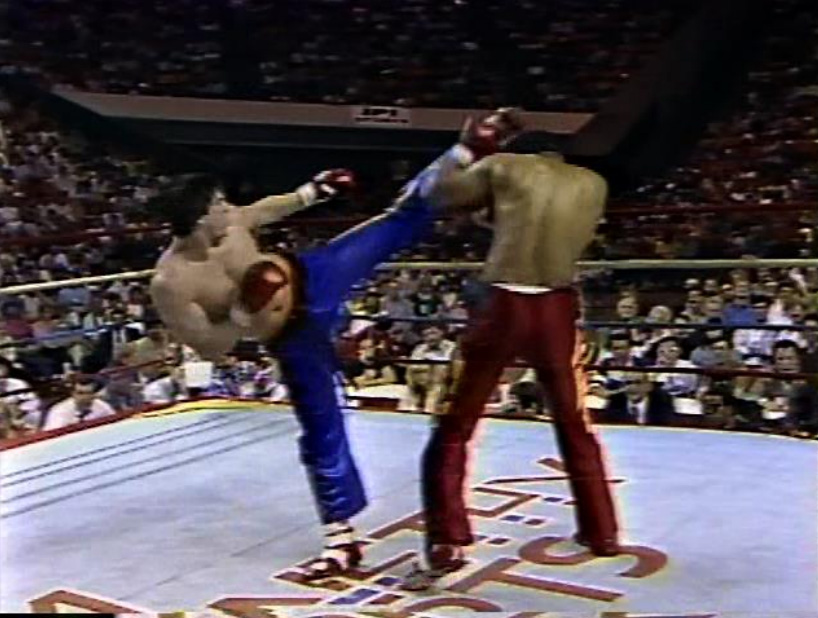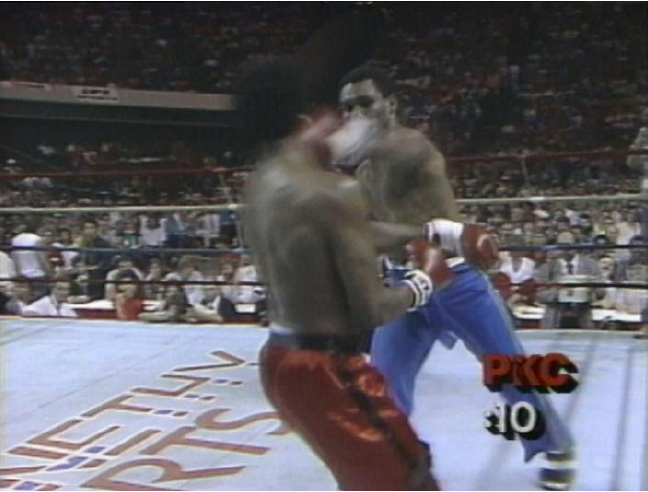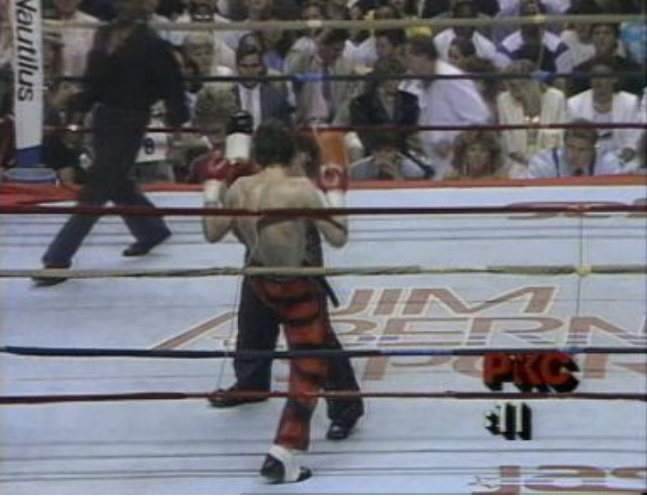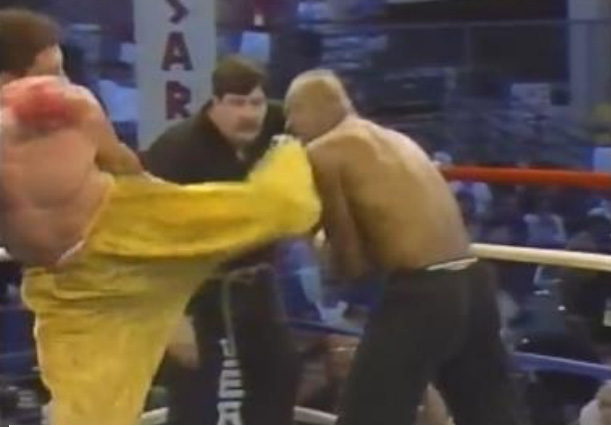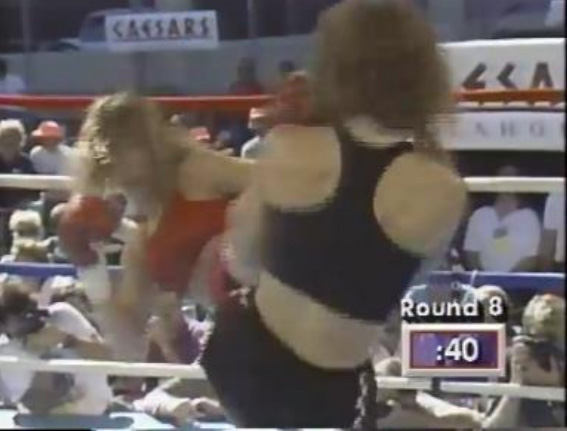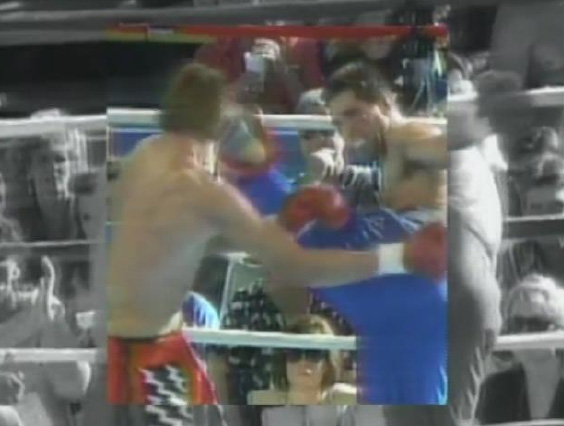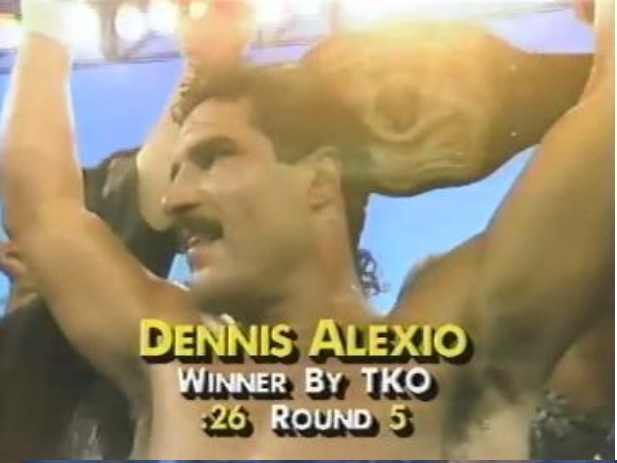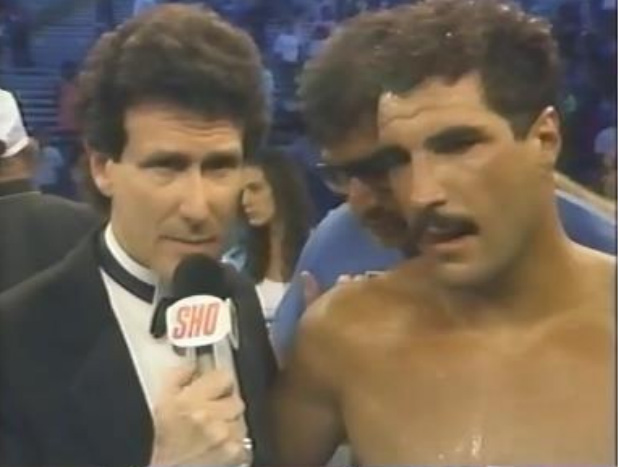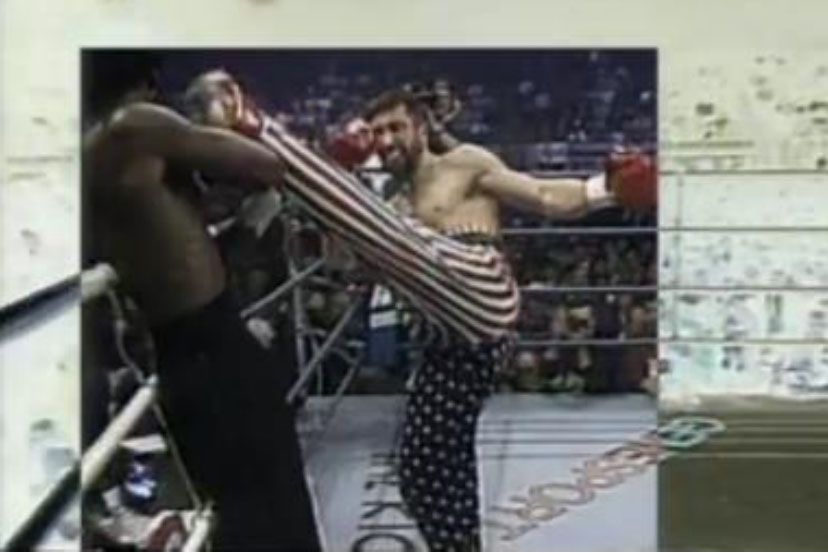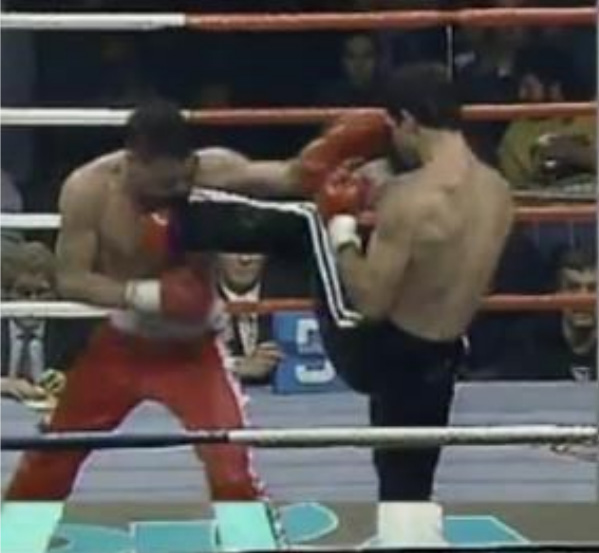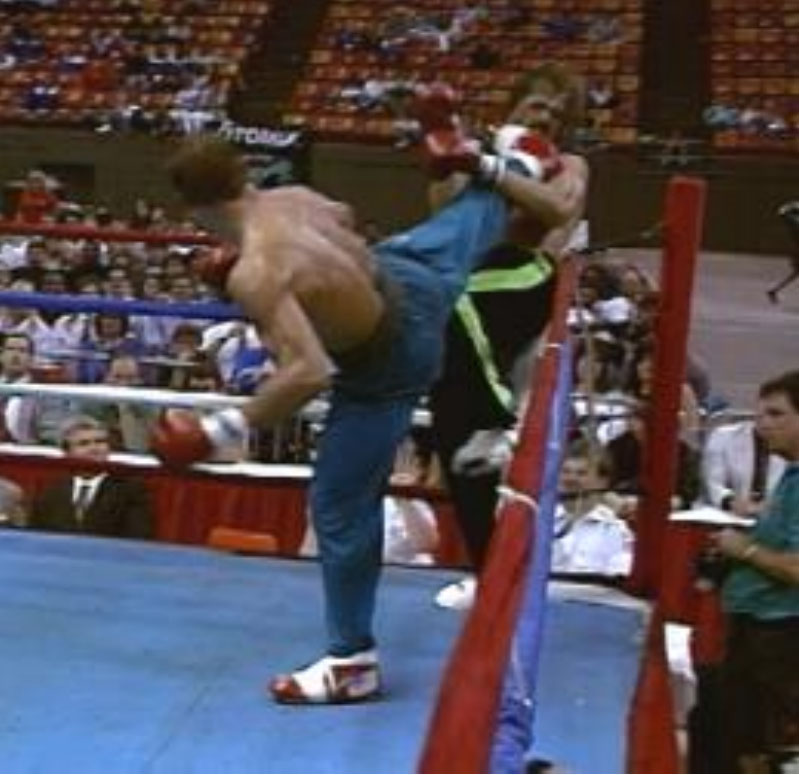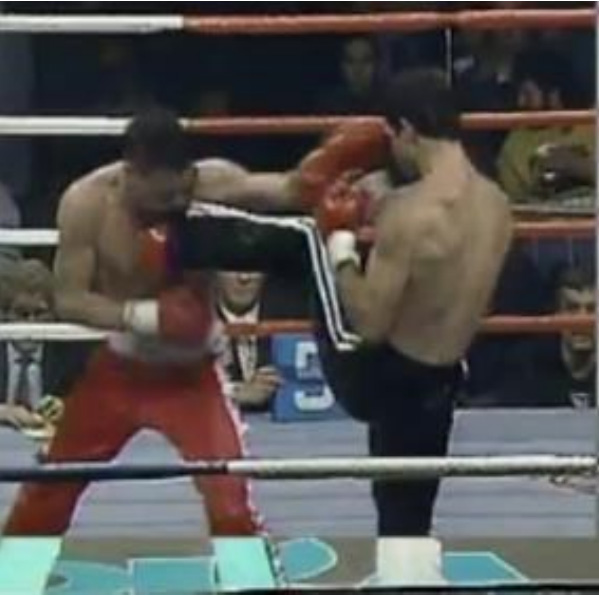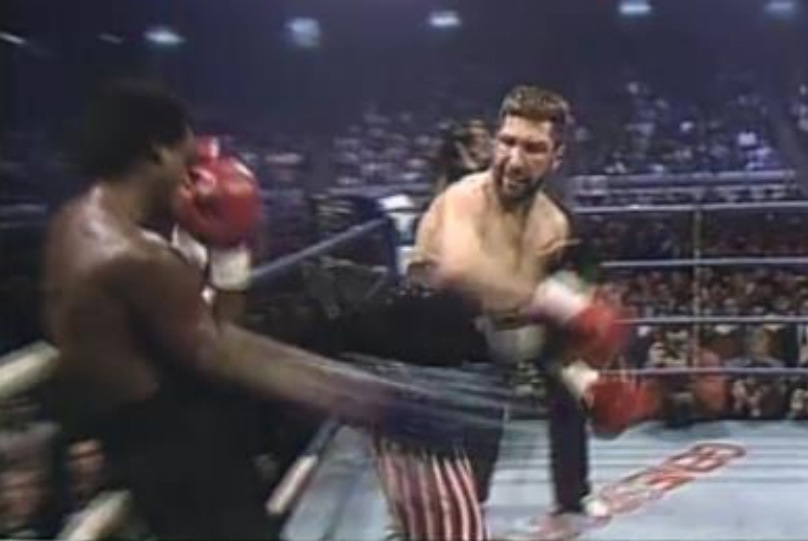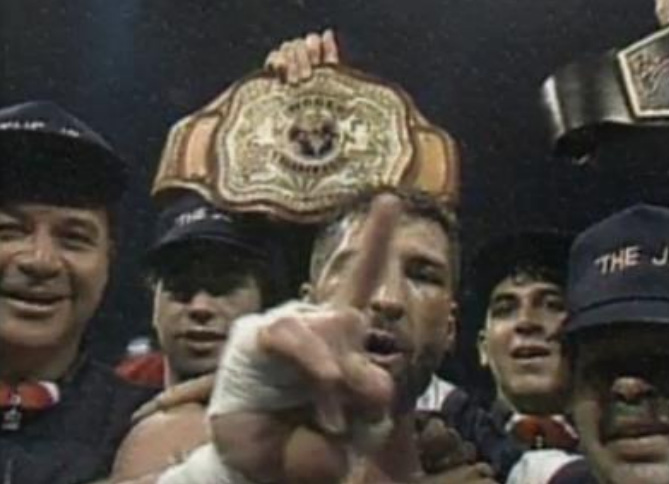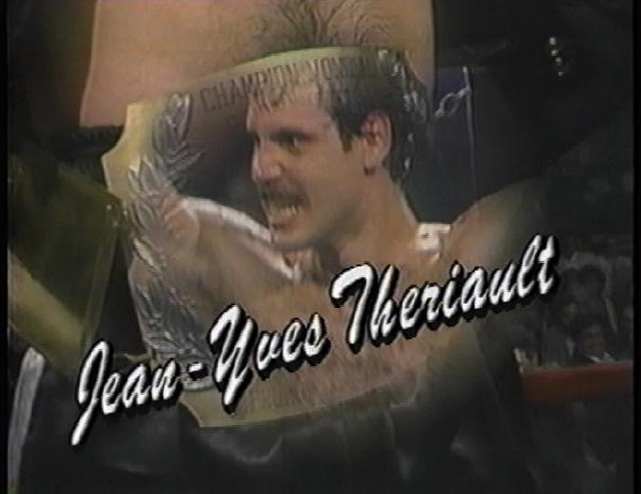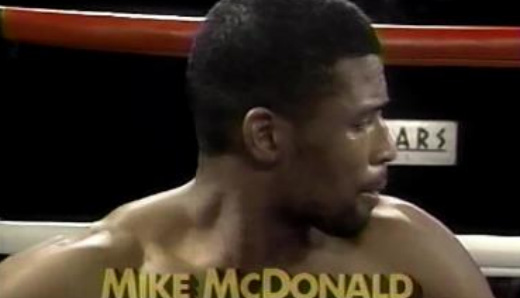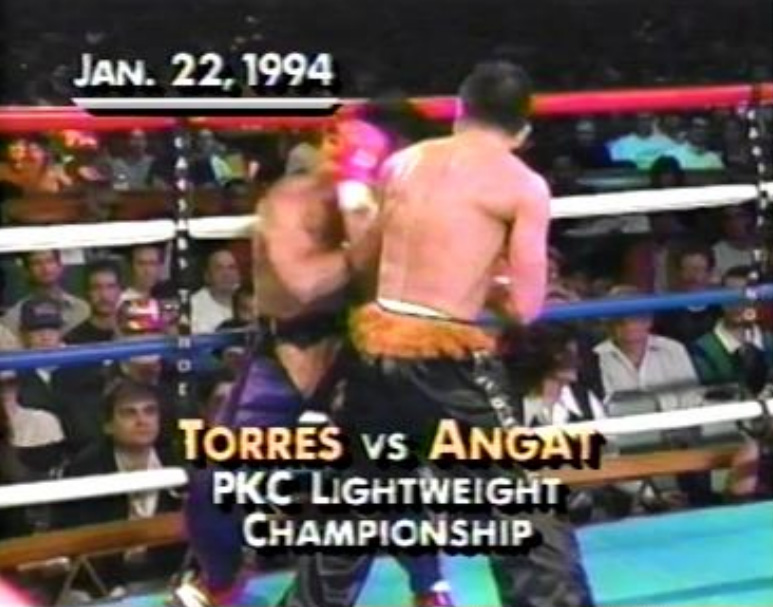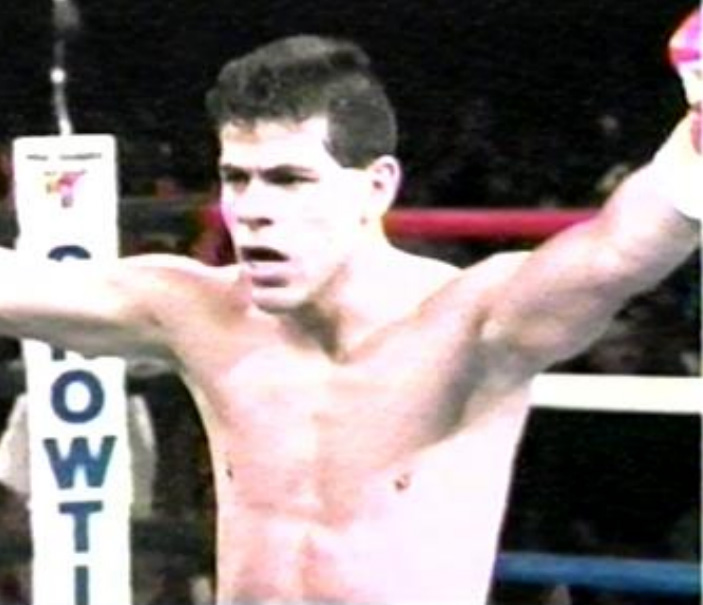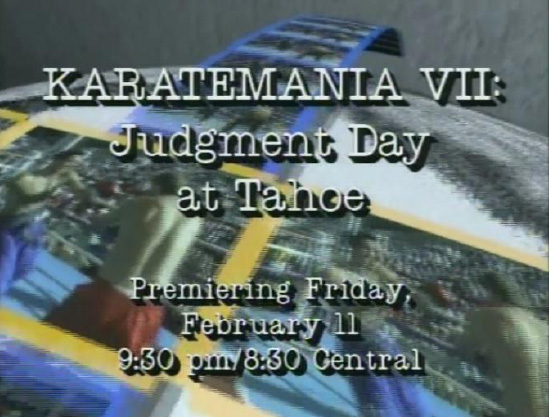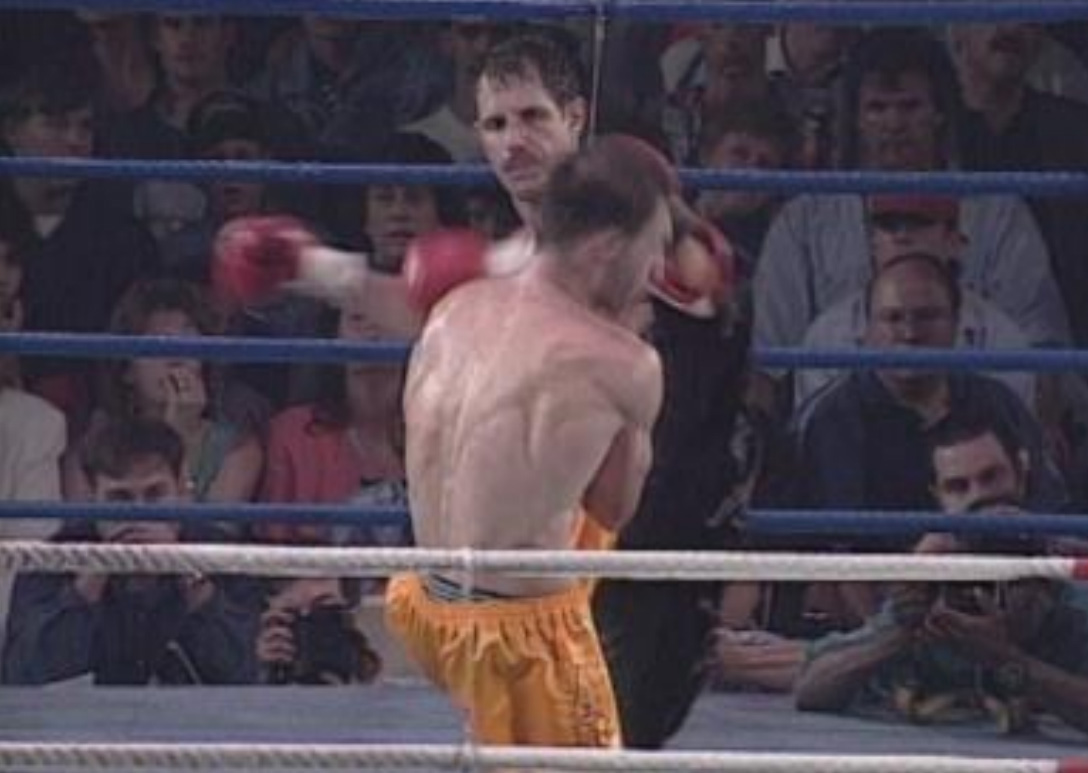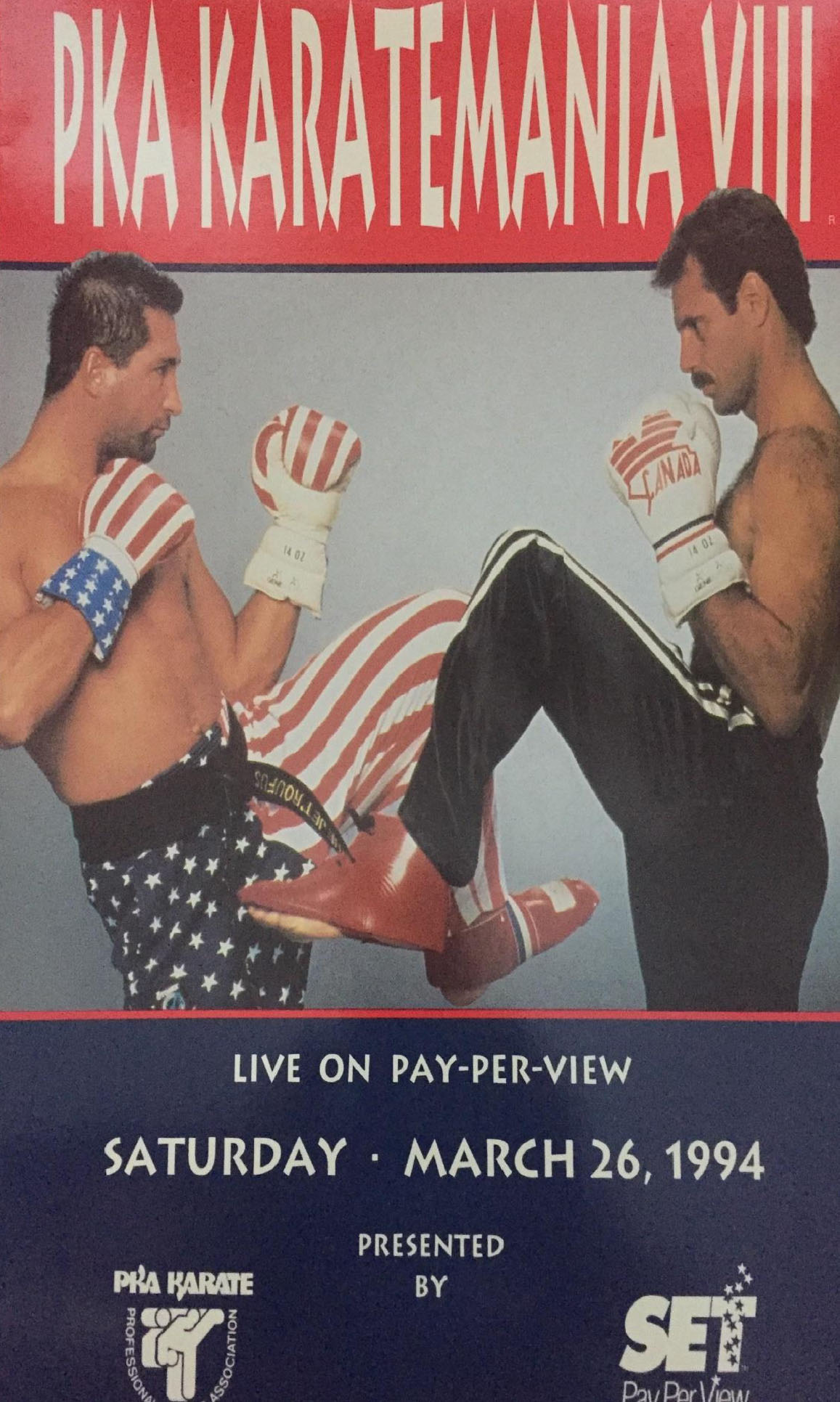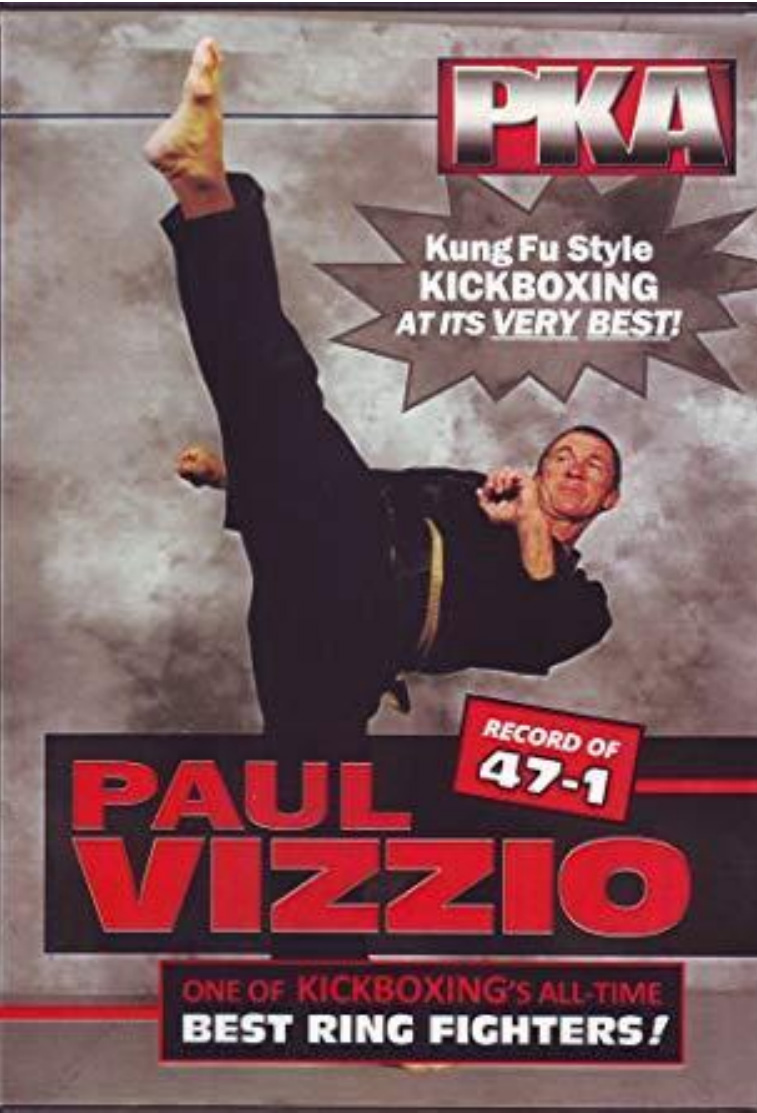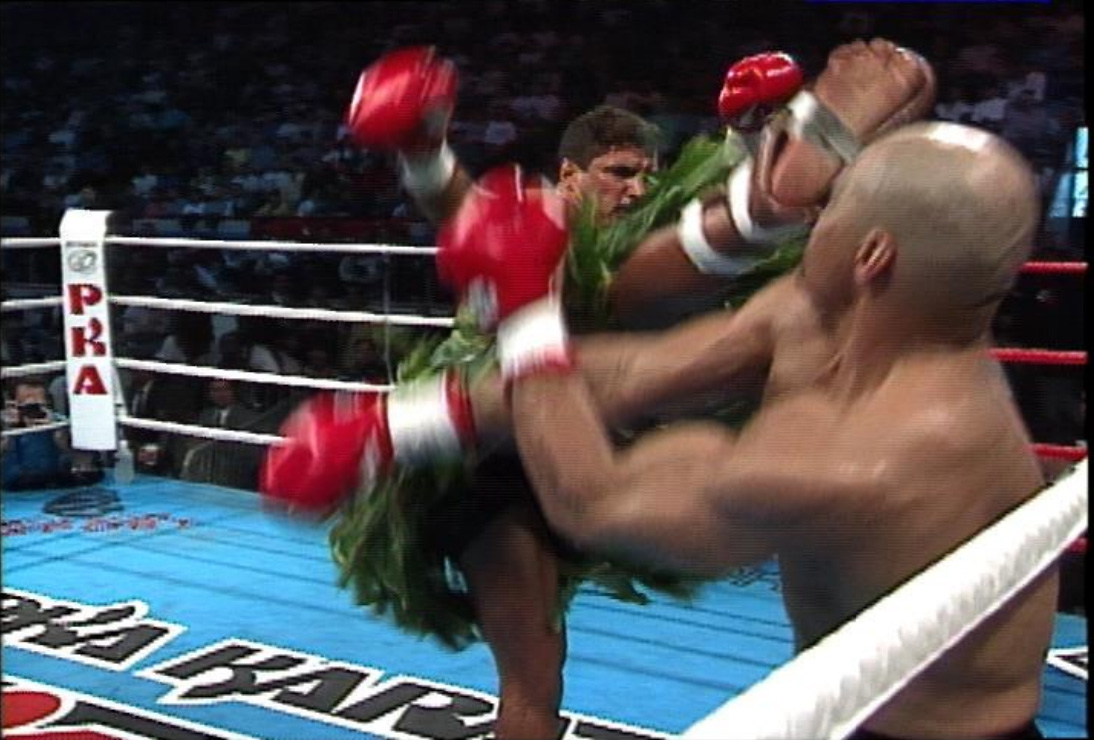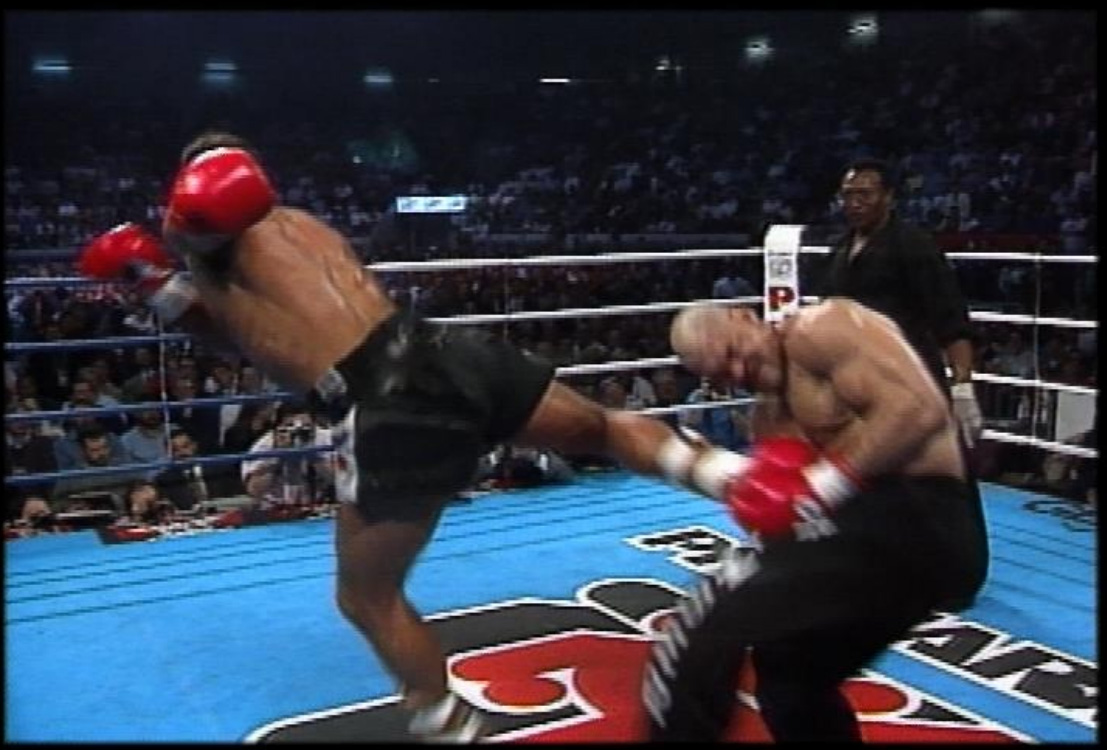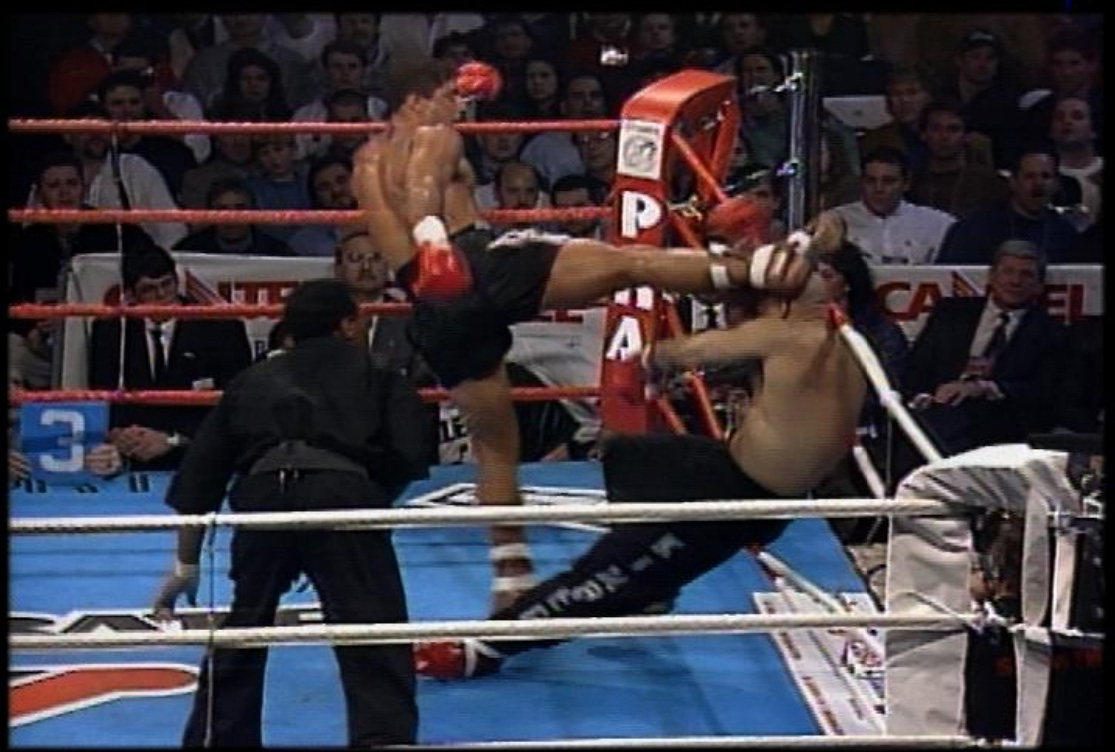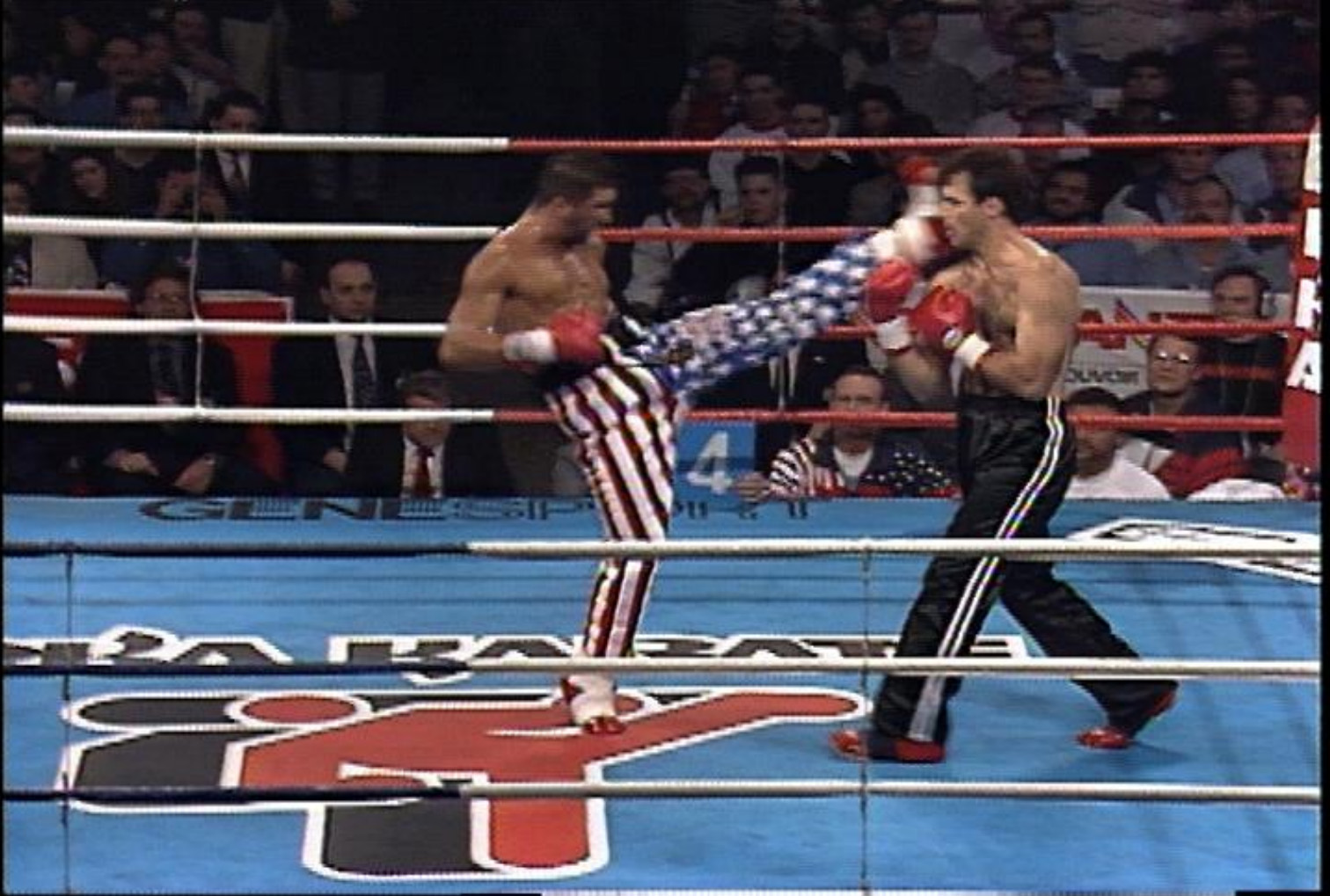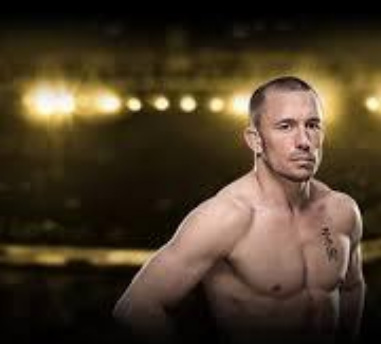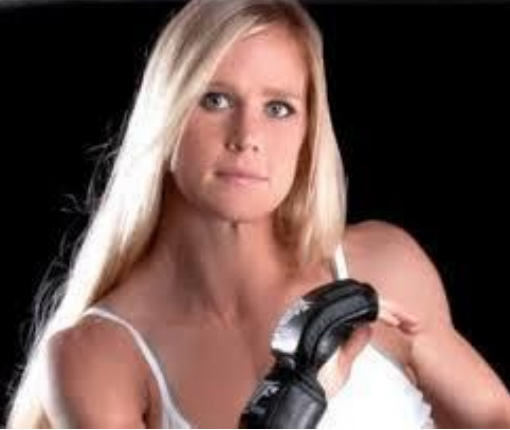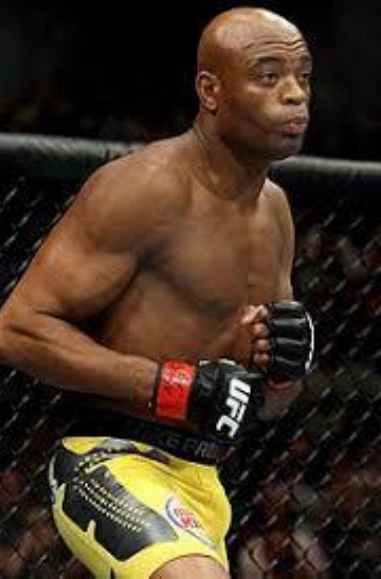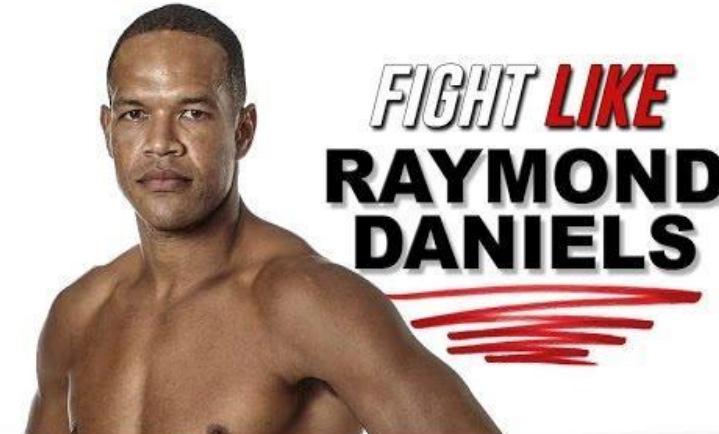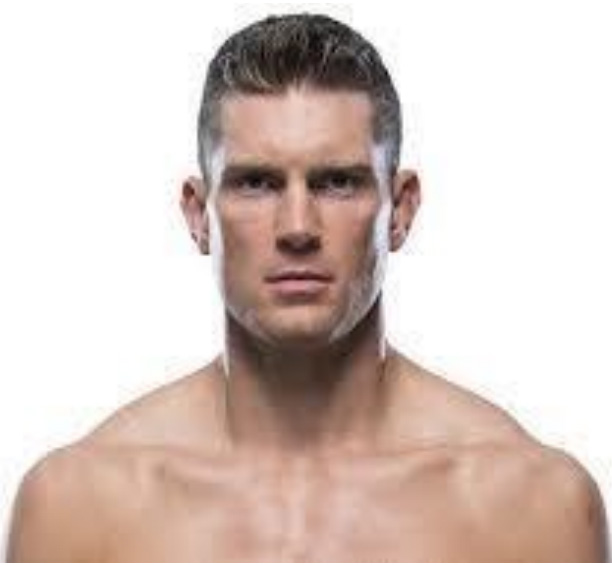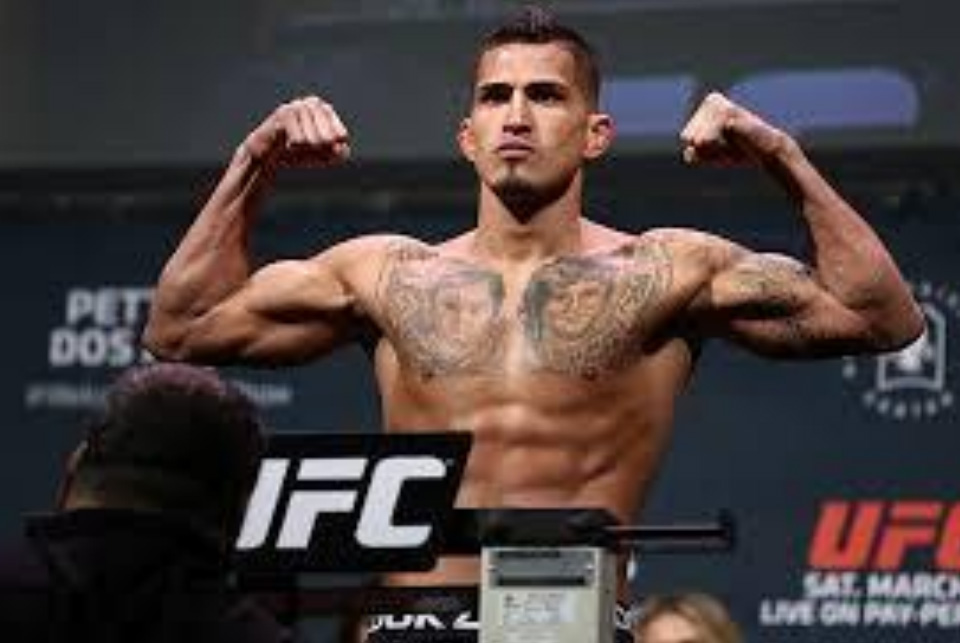Contents
Introduction
In September 1974, on ABC’s Wide World of Entertainment, what would be known as the very first PKA World Championship was held in front of a sold-out crowd at the Los Angeles Sports Arena. It was a highly rated broadcast, reaching 52% of all people watching television.
The broadcast was hosted by Kojak (Telly Savales)
and Ryan O’Neil. Stars galore were seated ringside, from David Carradine (Kung Fu) to George Peppard and dozens more.
The idea for this First World Championship came from Joe Lewis (RIP). It was Mike Anderson, editor of the Professional Karate Magazine, who made the arrangements for and promoted the first Full Contact World Championships on this fall day in Los Angeles.
Mike Anderson had invited the top point fighters from around the world, and in this first event the first four world champions were crowned: Isaias Duenas, Bill Wallace, Jeff Smith, and Joe Lewis.
Isaias Duenas
Mexico
world Lightweight champion
Isaias Duenas of Mexico’s David Moon School Captures PKA’s First Lightweight Crown
Joe Lewis
USA
world Heavyweight champion
Joe Lewis, First PKA World Heavyweight Champion
PKA KICKBOXING, NOW PKA WORLDWIDE: THE BEGINNING
The first World Championship was aired by ABC Network’s Wide World of Entertainment and attracted a full 52% of all people in the US watching television at that time.
There were only 3 networks: ABC, CBS and NBC.
By all accounts, because it was these particular 4 fighters that kicked off this first World Championship, and because it was so highly rated, and because the top Martial Arts talent in America ultimately worked to build the sport, and because the PKA then did so well on all the other networks subsequent to that, and because this action spread around the world… this night is widely accepted as the start of what is now known as kickboxing.
how did we get here at this time – – 2024 A.D. – – in this place and with these people?
This is the history of kickboxing!
101 Years Leading to Today’s PKA Kickboxing
When soldiers returned to America (and to a number of other countries around the world) from Japan, Okinawa and China after World War II, and from Korea after the Korean War, the Asian Martial Arts began to take root in the West.
Innovators like Roberts Trias, Ed Parker, Jhoon Rhee and others introduced the styles they had learned and/or the arts of their birth countries. Robert Trias introduced Karate, Ed Parker Kenpo and Jhoon Rhee Korean Karate (later called Tae Kwon Do), which incorporated more kicking.
Then when the Karate tournaments began to take place in
America, the traditional point fighting became the method for competition.
From the late 1940’s through the late 1960’s, most karate sparring in the schools and in tournaments continued to look like the traditional tournaments. Even watching the Chuck Norris versus Joe Lewis and Allen Steen competition from the Internationals in the late 60’s looked very much like a Shotokan event with some really good, fast, powerful taekwondo kicks from Chuck Norris and from Allen Steen added.
Jhoon Rhee and Bruce Lee trading techniques on the shore
Grand Master Robert A. Trias, USKA
Stances still looked much like the Shotokahan / JKA stances and the reverse punches very much looked the same. The back fists thrown by the Americans were very fast, and were very close to what the boxers’ jabs – just approaching the target from a slightly different angle than the boxers (and sometime later, we would see Muhammad Ali throwing a partial back first as one of his “jab-like” Friends Bruce techniques).
Most tournaments called “half-points” in the 70’s just as the early Japanese karate and Judo tournaments had done. As Joe Corley observed in the first Henry Cho’s All-American (taekwondo) Championship “I fought in at Madison Square Garden in 1969, and they were still awarding half points at this Korean sanctioned tournament. In fact, it was still being called Korean Karate in those days.”
Underneath the surface of it all, a new American influence was beginning to take place, as it had in boxing. If you go back and watch the amateur boxing from that era you will see that Europeans and other fighters from around the world had a very stiff, almost monotonous, fighting stance, but the Americans, like Cassius Clay who became known later as Muhammad Ali and other American boxers began showing their own personal styles. Their hands were held in different places, the head movement changed, the footwork changed, feints began to appear, and Western Boxing took on an entirely different look.
The same thing started happening in the American Karate circles, and in 1972 Joe Corley and several others began calling what they were teaching American Karate.
Many traditionalists were incensed at that nomenclature, but in fact Americans were beginning to combine what they had learned in boxing with what they were doing with their kicks.
As Joe Corley said at the time, “It really is not Karate and it really is not Tang Soo Do or Tae Kwon Do any more–the way we are teaching it–and what better to call it than “American Karate“.
Karate was still punching and kicking, but the kind of punches – – where they started from and where they returned to – – changed. The punches in American Karate were starting up at jaw level, and returning to jaw level, not starting at the waist and returning to the waist. The punches had, in fact, become boxing style punches. To further the point, the punches delivered from front stances changed and punches began to be thrown with a pivoting motion just like in western style boxing. That was happening in the karate circles before the concept of “KICKBOXING” began to be introduced.
So where did “KICKBOXING” come from?
In every era, good athletes want to be tested to the limits of their abilities. And so it was, a leading American competitor, Joe Lewis, began to compete in what they were calling Full Contact Karate events, in which they would wear boxing gloves and some form of shoes or go barefoot, and he and his opponent would try to knock one another out in a series of rounds.
The simple description is that it was ‘boxing with kicking” or “kicking with boxing”, and that it was KICKBOXING. This was going on in the late 60’s and in a few fights. In the very early 70’s, Joe Lewis faced Greg Baines in Los Angeles, Ronnie Barkoot (RIP) in New York and Big Ed Daniels in Texas.
These were one-off, unique events and were something of a side interest of Joe Lewis. In this same time frame, the fighting style of Bando was introduced here by the venerable Dr. Maung Gyi. It was demonstrated by the Bando team of Bob Maxwell and Dr. Gyi and those bouts were attracting interest, and in the summer of 1974 at Bob Maxwell’s spectacular event in Ocean City Maryland, Harvey Hastings and Jack Dutcher would square off in the ring, with a victory for Harvey Hastings (RIP). Just a few months later, formal kickboxing would be born and at least – for that time – would be called ”full contact karate“.
Meanwhile, the top Point Fighters were still doing their techniques in the karate tournaments from Karate stances, but the foot movement was becoming more fluid; they were still being judged as always, on a point system. But something was still bubbling beneath the surface. Americanization was bubbling.
One of the bits of wisdom that Joe Corley picked up from his mentor Pat Johnson, with Chuck Norris, was that their system–the Norris system–represented what was good about martial arts in America. The Korean stylists were willing and anxious to learn from the Japanese stylists who are also anxious to learn from the Koreans. Everyone wanted to learn from the Okinawans and the Chinese wanted to share their information and Americans wanted to learn that information, but it seemed it could happen only in America.
When the Martial Arts first arrived in America, the war among the Styles was pretty fierce, but the first generation of American competitors began to
fight that tradition.
So, as has happened with so many things in America, there was a melding of techniques, Japanese practitioners daily seeking to learn from great
kickers, and Korean stylists becoming great punchers.
Joe Corley’s Battle of Atlanta was born in 1970 and the scene was set to eliminate what was regional bias and the different stylists from all over the country would come to the Battle and other Open Tournaments. The fighting and the fighters got more exciting every year. Joe Lewis captured the grand championship at this first Battle of Atlanta history, and Joe Corley would not have known then the tremendous impact Joe Lewis would have on the future life of Joe Corley personally and professionally, or on PKA, or kickboxing.
Next, Jhoon Rhee introduced his safety gear in 1973, Master Pat Johnson advised Corley to set up the Battle of Atlanta Tournament of Champions, and the fighters started landing their controlled techniques on their opponents in a controlled fashion, and now…the scene [for KICKBOXING] was set.
BACK TO THE BEGINNING
And now…it is 1974……September 14, and Joe Lewis and Mike Anderson have arranged for an ABC Broadcast, under the guidance of Tom Tannenbaum, of the First World Full Contact Karate Championship—punching and kicking full power, wearing foam gear on the hands and feet….going for the knockout.
Each semifinal bout is 3 rounds, as is each of the Championship Rounds, and here Joe Lewis, Jeff Smith, Bill Wallace and Isaias Duenas emerge as World Champs.
Just prior to this event, Mike Anderson met with and later partnered with a husband and wife team in Los Angeles, who were also parents of children who were taking lessons at Chuck Norris’ studio and who had some experience in the film and TV industry.
This team incorporated the name Professional Karate Association there in California, and it was the three of them, Mike Anderson and the husband and wife team, that set out to promote the sport further on television. Joe Corley, a world-rated Middleweight fighter at the time, who had undergone a spinal fusion in December 1973, was invited as a judge at this very first world championship. In June, ’74, Corley had returned to training and was just getting back in the ring with the guidance of his coach Asa Gordon. Corley decided while watching the full-contact fights that night in Los Angeles that he would challenge Bill Wallace for his middleweight title, and he proposed to do it at the 1975 BATTLE OF ATLANTA, Battle of Atlanta VI, 8 months later. Corley would spend that full 8 months getting his body into condition to go 9 rounds against Bill “Superfoot” Wallace.
Some 12,000 people saw that first fight, live, ringside with Corley and Wallace. Superfoot won this first ever nine round fight against Corley. Interestingly enough, Corley would be invited to become the voice of kickboxing for CBS Sports, its color commentator for Bill Wallace’s fights starting in 1977 through his retirement in 1980, live on CBS Sports. The two have become great friends over the years, partnering on many different projects together. This first title defense lives as one of the more iconic events in the sport.
In 1975, a few months after he unsuccessfully challenged Bill Wallace, Joe Corley started the World Professional Karate Commission (WPKC), strictly because none of the established martial artists’ were able to create a WIN-WIN in the sport with this husband and wife team that had incorporated PKA in California with Mike Anderson.
This team and Mike Anderson ran the PKA alone together until mid 1976 and several world championships were held on CBS Sports spectacular, featuring Bill Wallace and Benny Urquidez as the main event fighters.
During those 1975–1977 years, with PKA and WPKC operating as separate entities, Jeff Smith fought Jim Butin in Washington DC; he then fought Kariem Allah in the semi-main event of the Thrilla in Manila in October 1975 as 50 million fans looked on. Smith then successfully defended his title against Canadian Wally Slocki at the spring 1976 Battle of Atlanta in spring 1976 with Bob Wall, Olympian Bill Toomey and comedian Freddie Prinze (RIP) as commentators.
(Mike Anderson then sold the husband-wife team the PKA for $1, “out of sheer exasperation”, he said, and Anderson then joined his friend George Bruckner to start WAKO in Berlin. It was their amateur organization).
In March, 1977, Jerry Rhome had his epic fight with Ross Scott on Ted Turner‘s new cable network. It was that fight that Corley had reviewed with CBS Sports when they asked him to become their voice for PKA KICKBOXING. Although Corley asserted to them that the family team would not allow it, CBS insisted on it.
So it was in April 1977 that CBS Sports placed Joe Corley at ringside to cover the fights of Benny Urquidez versus Howard Jackson, Bill Wallace versus Blinky Rodrigues and Ross Scott versus Everett Eddy. It was there that the PKA husband and wife team suggested to Corley that they join forces “for the sake of the sport“.
Because of the CBS contract, which was represented through IMG – INTERNATIONAL MANAGEMENT GROUP (IMG–Corley agreed to their offer and a contract was drafted). (It was a Godwink that IMG would be the same company that in 2016 engineered the sale of UFC for a $4.025 billion – the largest ever acquisition in the sports industry – telling Corley he really had not been crazy all those years proclaiming that martial arts could equal the size of any major sport – and he still believes that about PKA WORLDWIDE occupying its own unique space today) so when 1977 (not 1077) Corley was to be 1/3 partner with 50% voting rights in PKA and it was that agreement (drafted by what is now the largest law firm in the world), and because of the organizational skills and hard work of Joe Corley and a host of other great, like-minded leaders in the martial arts working together for years and years that PKA began to take shape as a real sports entity.
Corley and the other promoters had created what would later be known as the PKA rules. Under these rules, the fights were held in a boxing ring, the rounds were two minutes with one minute rest. And the rounds were scored as in boxing. Each fighter had to throw 8 powerful kicks per round, holding was not allowed and heavily penalized and “even” rounds would be decided by who delivered the most EFFECTIVE kicks.
With PKA, Joe Corley then helped assemble and organize all the different committees for rules, ranking, ethics, sanctioning and more, calling on his relationships with the top athletes, promoters and competent martial artists from around the world.
The key people who loyally volunteered their hearts, their souls and their incredible experiences and problem solving skills included Jay Will (RIP), Glenn Keeney (RIP), Don Willis (now director for PKA Worldwide memberships), Gary Fookes, Kathy Vitali, Truman Irving, John Therien, Pat Johnson (Karate Kid, Ninja Turtles and more), Sam Chapman, Bill Clark, Bill Imboden and Jim Harrison (RIP). These people were the central part of the central effort, all working and volunteering for the common good.
This group was then supported over the years by great like Chuck Norris and Parker Shelton ((RIP), John Therien, John Corcoran (RIP), Jay T Will (RIP), Karate Kids’ Mr. Miyagi-Pat Morita (RIP), Ernie Reyes, Sr., Tony Thompson and David Praim.
Other committees, activities, promotions, PR and more included the efforts of Karyn Turner, Jim Butin, John Worley along with Gordon Franks, John Longstreet and more in broadcasting support), John Monczak) with Bad Brad Hefton and Rickey Haynes), Hilary and Tony Sandoval (RIP) along with Cliff Thomas, Mike Sawyer, Bill McDonald (RIP) (with Tony Lopez and Oaktree Edwards), Victor Theriault, Leo Loucks, and more.
Corley was then asked to be the commentator for NBC Sports in addition to CBS.
And then in 1979, PKA entered into a long-term agreement with ESPN, where Corley again did commentary for the PKA ESPN bouts.
During all this time, the fighters were becoming more and more electric, adding great boxing skills to their incredible kicking skills, and the original champions, Jeff Smith and Bill Wallace continued to fight and impress everyone around the world, as Joe Lewis took a little break from the ring for a film career.
The PKA would do 44 ESPN events in 1979 along with CBS and NBC events, then 40 ESPN events in 1980, another 40 in 1981 and then began to do 30 events each year, again complemented by events on NBC, CBS, USA network and several other networks.
The list of incredible world-class athletes, World Champions and challengers from around the globe grew exponentially. The fighting, promotional and organizational pool was deep and wide, and these fighters have ended up in our PKA Greatest Fighters of All Time Library:
PKA GREATEST FIGHTERS OF ALL TIME
Bill Superfoot Wallace
Isaias Duenas
Troy Dorsey
Dennis Alexio
Cecil Peoples
SBill Clark
Rodney Batiste
Don the Dragon Wilson
Jacquet Bazemore (RIP)
Irish Mike Brennan
Curtis Bush
Mike Coles
Raymond Daniels
Everett Eddy
Demetrius Oaktree Edwards
Gordon Franks
Felipe Garcia
Jeff Gripper
Tom Hall
Earnest Hart, Jr
Demetrius the Greek Havanas
Rickey the Wolf Haynes
Richard Action Jackson (RIP)
Big John Jackson
Billy Jackson
Yoel Judah
Keith Vitali
John Longstreet
Tony Lopez
Gene McComb
Emilio Narvaez (RIP)
Jim Korb
Jeff DC Bomber Smith
Raymond McCallum
Howard Action Jackson
Alvin the Million Dollar Baby Prouder
Bad Brad Hefton
Darrel Henegan
Jerry Rhome
Benny the Jet Urquidez
Ishmael Robles
Kerry SuperKicks Roop
Tony the International Tiger Rosser
Rick the Jet Roufus
Rob Salazar
Ross the Hammer Scott
Leroy Superfeet Taylor
The Iceman Jean Yves Theriault
Cliff Magic Thomas
Bob Thunder Thurman
Juan Ghost Warrior Torres
Jerry Golden Boy Trimble
Benny the Jet Urquidez
Keith Vitali
Jimmy Blann
Tommy Tornado Williams
Don the Dragon Wilson
Eddie Andujar
Jorge Angat
Tony Avalos
Mike Bell
Robert Biggs
Greg Blann
Ken Dallas
Joe Lewis
Jeff Payne
Mike Warren
Paul Vizzio
Pat Worley
Jersey Long
Jerome Canabate
James Waring
Sylvester Cash
Jerry the Sting Clarke
Melvin Coles
Philippe Coutelas
Curtis Cowboy Crandall
Harvey Crews
Anthony the Electrifying Elmore
Mark Gurley
David Humphries
Michael Husbands
Dick the Destroyer Kimber
Roy Kleckner
Bill Balls Clark
Leo Loucks
Oliver Miller
Moore Mike
Don Nielsen
Terry Norblom
Tommy Richardson
Michel Rochette
Anthony Salerno
Carl Sklavos
Norris Williams
Steve Shepherd
WKA RECOGNIZED CHAMPS
(More WKA Champions to be added with input from Don Wilson and Ted Pryor)
Ted Pryor
Rob Kamen
Ernesto Hoost
A big part of the PKA successes came on airplanes where Joe Corley and PKA‘s main referee, Jay T Will, would discuss everything that had happened at the events and continued to revise the fighting rules, the scoring and the entire culture around what would ultimately become PKA WORLDWIDE.
As always, PKA could not be everything to everyone, and a rival organization, WKA, appeared in 1977. This organization insisted on having leg kicks, and its competition in the early days was primarily held in Japan, where its bouts were generally considered modified Muay Thai bouts, quite dissimilar to the PKA BOUTS.
Their best champion was originally former PKA champ Benny that would be BENNY “the Jet“, later joined by former PKA contender and US champion Don Wilson(both of whom had been promoted widely by PKA on CBS and ESPN), Peter Cunningham, and several others, mostly from the West Coast, who were competing in these WKA events.
Joe Corley would often say internally that he wished that Benny Urquidez and Don Wilson had been able to continue fighting in PKA. In many meetings suggested by the world’s largest sports marketing company, IMG (that brought $4.025 billion for the UFC sale), Corley and the WKA leader met, but the WKA leader would have none of the synergy suggested by Barry Frank and Corley.
Other groups would be formed in various places, more world champions would be crowned than even boxing had coronated, and the sport would continue to have influence in various areas.
All the while, the PKA Champions were always the best known. Joe Corley‘s primary role then, from 1977 through 1986 was to coordinate, broadcast and develop public relations around the best fights in the world and the greatest kickboxing fighters in the world. Over these years, Joe Corley produced with ESPN, CBS and NBC some 1,000 hours of programming, and many great names were developed along the way. We had great fights on the networks and ESPN with great ratings on all of them, and in those days, boxing’s top promoters did all they could to slow the growth of the sport.
During all those years, the PKA did not have a major financial partner, and in the end, that would be the temporary undoing of the PKA. As is true in so much of the martial arts, too many people want to be in charge and are unwilling to participate in the long-range view.
And so it was in 1986 that Joe Corley and his partners in the PKA would part ways.
At the same time, there were some promoters that Joe Corley had brought into the PKA and had trained and worked very closely with and whose events he had scheduled for broadcast in the PKA who decided to separate and form the ISKA. These people decided to compete with the PKA sponsors Joe Corley had signed and compete for television contracts. Years later, Corley and these “separatists” are friends again, for the most part, and he worked with them in short term ways when he thought it could be win-win.
But as in the splintering off of the WKA, there were too many chiefs and not enough braves at the time, and everyone thought they were the brilliant leaders and saviors. Again, martial artists were not working together, and there was no financial partner to dictate who should do what. As history moved on, other organizations would arise and would primarily work in regional areas.
Joe Corley worked with his friend Glenn Keeney continuing to build a sport around the Professional Karate
Commission (PKC) and worked with Grand Master Keeney and Don Willis in promoting big PKA events on Showtime from 1991 through 1994. From KARATEMANIA I in April 1986 Featuring Jean Yves Theriault vs Bob Thunder Thurman and Jerry Rhome vs Bad Brad Hefton and Jerry Golden Boy Trimble vs Leroy Taylor on ESPN through KARATEMANIA VIII in 1994 on SHOWTIME and Pay Per View, featuring Jean Yves Theriault vs Rick Roufus, Dennis Alexio vs Dick Kimber and Paul Vizzio vs Juan Torres, PKA aggressively promoted the top names in the sport in the biggest broadcasts in the history of the sport.
In January, 2019, Joe Corley and Don Willis reacted to requests from around the world to reestablish PKA in the form of PKA WORLDWIDE, and they have involved representatives from the US, South America, Canada and Europe, laying the groundwork for a series of major events.
“We have been here, done this, and we look forward to doing it again”, Don Willis said.
At this writing, Joe Corley has made an agreement with an international broadcaster to air the PKA Greatest Fights of All Time.
Now a 10th Degree Black Belt Grand Master, Corley and PKA Worldwide are fully committed to take today’s kickboxing stars to new heights in the Combat Sports World in this new structure created for the promotion of PKA NEW MILLENNIUM WARRIORS via PKA WORLDWIDE!“

KARATEMANIA I: 1986 at BATTLE OF ATLANTA XVII
Joe Corley’s Battle of Atlanta was home to Karatemania I, II and IV, presenting the Greatest Fighters of All Time.
Chuck Norris is flanked on the left by the great Howard Jackson (RIP) and Evander Holyfield, before he won his first world title, which he would capture the following year. Chuck Norris, an incredible champion, is an even bigger “Champion in Life”
KARATEMANIA II: 1987 at BATTLE OF ATLANTA XVII
KARATEMANIA III: 1990 AT CAESARS TAHOE CASINO
Dennis the Terminator Alexio (left) stops Jerry Rhome in the 5th round to capture the PKA World Title to go with his other World Titles
KARATEMANIA IV: 1991 AT BATTLE OF ATLANTA XXII
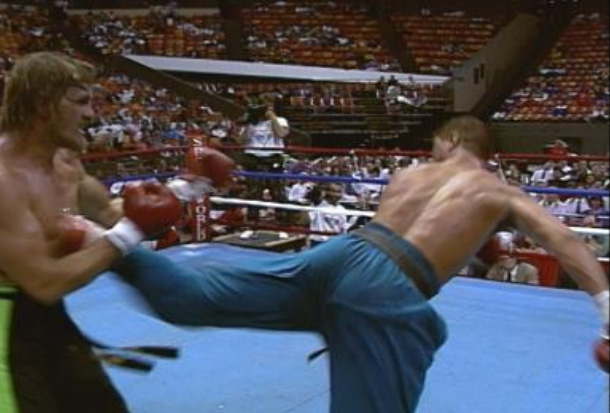
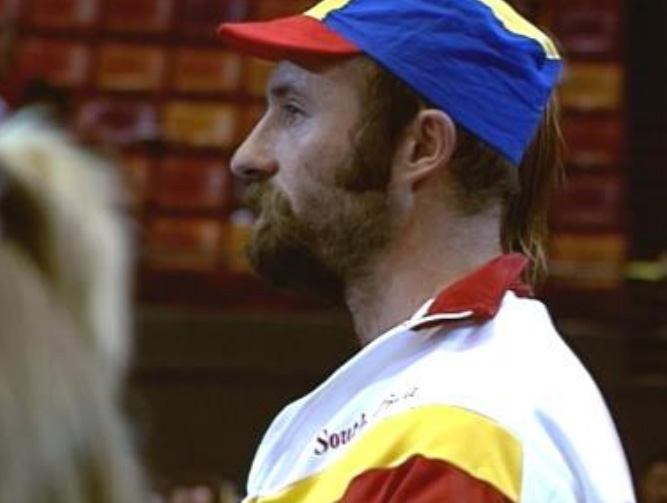
KARATEMANIA V: 1991 IN MONTREAL
KARATEMANIA VI: 1993 AT CAESARS TAHOE CASINO
Mike Thunderkick McDonald, WKA North American Champ, Challenges Rick the Jet Roufus for the PKA Light Heavy crown. Roufus KO’s McDonald in 1st Round. McDonald goes on later to win the K-1.
KARATEMANIA VII: 1993 IN MONTREAL
Australia’s Tasis Petridis travels to Montreal to be Jean Yves Theriault’s final challenge before squaring off against Rick the Jet Roufus in PKA KARATEMANIA VIII. Petridis has a great night and has just the wrong style for the Iceman and while they punched and kicked each other non-stop, Petridis leaves Montreal with a split decision victory over Theriault.
KARATEMANIA VIII: 1994 IN MONTREAL
Rick Roufus vs Jean Yves Theriault was building for 8 years from 1986 – 1994…also on the card DENNIS ALEXIO defends his heavyweight crown against DICK KIMBER and PAUL VIZZIO meets JUAN TORRES for the lightweight crown.
2009 – 2024
MMA fighters are standing on the shoulders of the greatest strikers of the previous 60 years
And PKA worldwide join UFC fight with its greatest strikers of all time series
